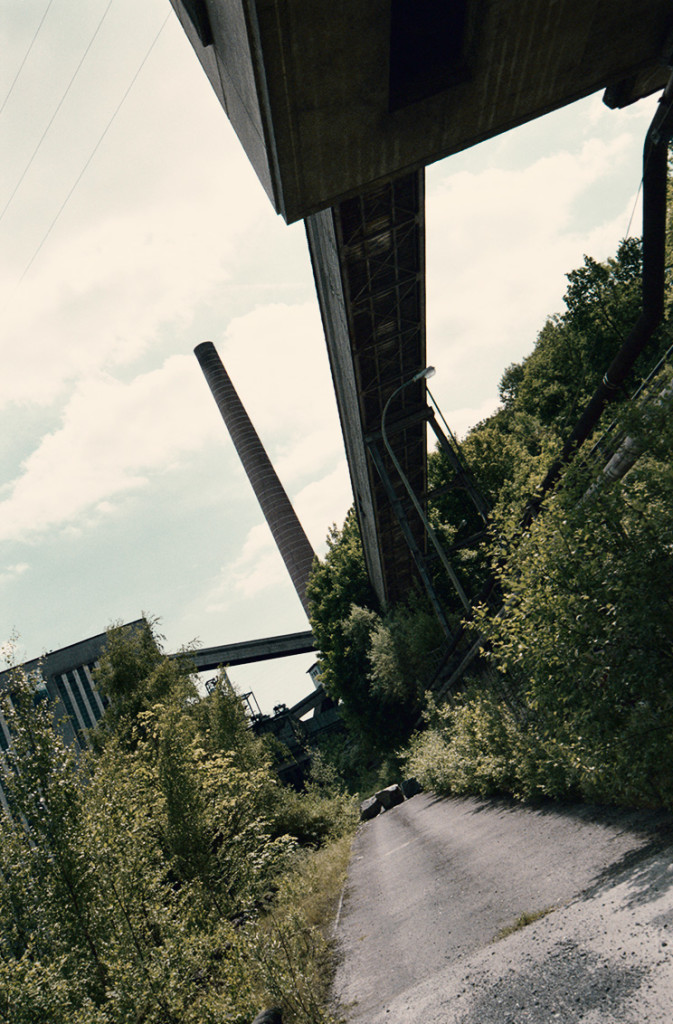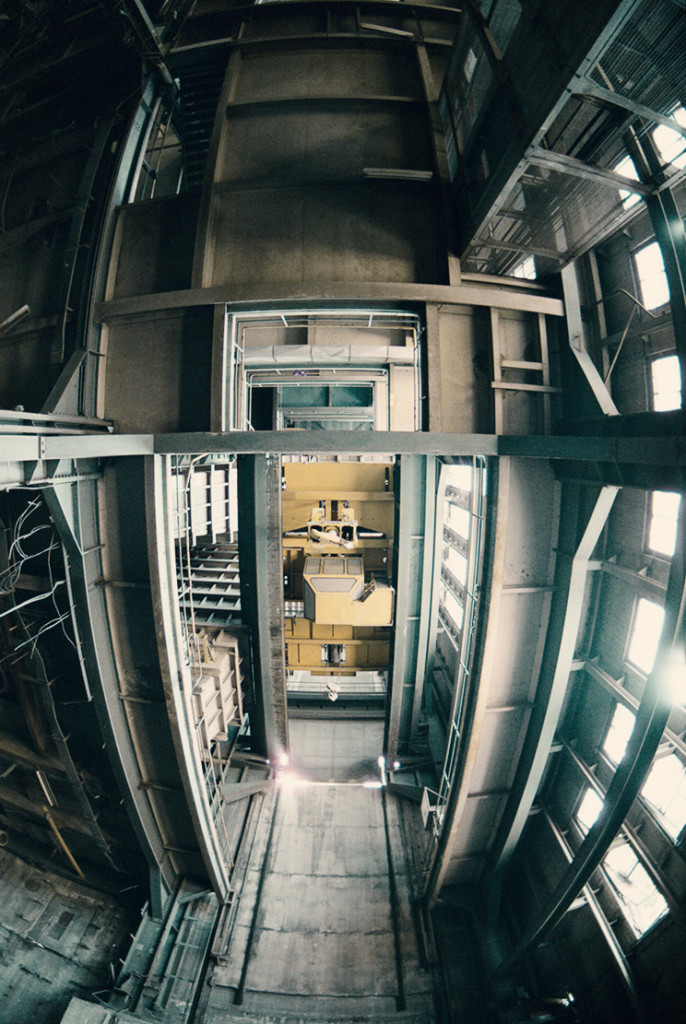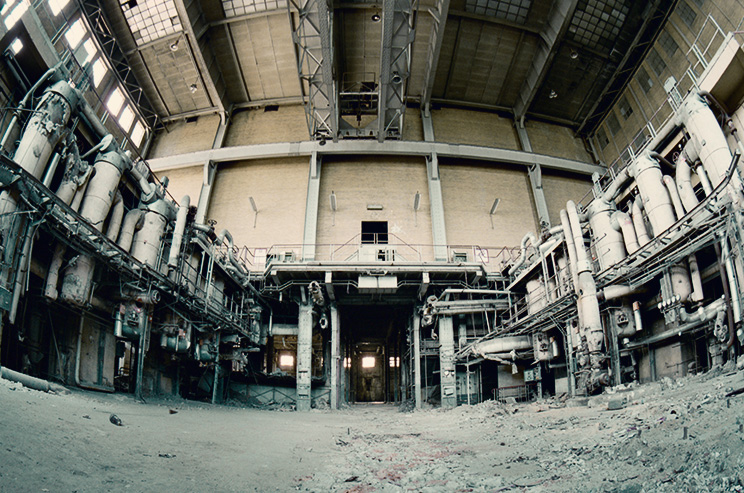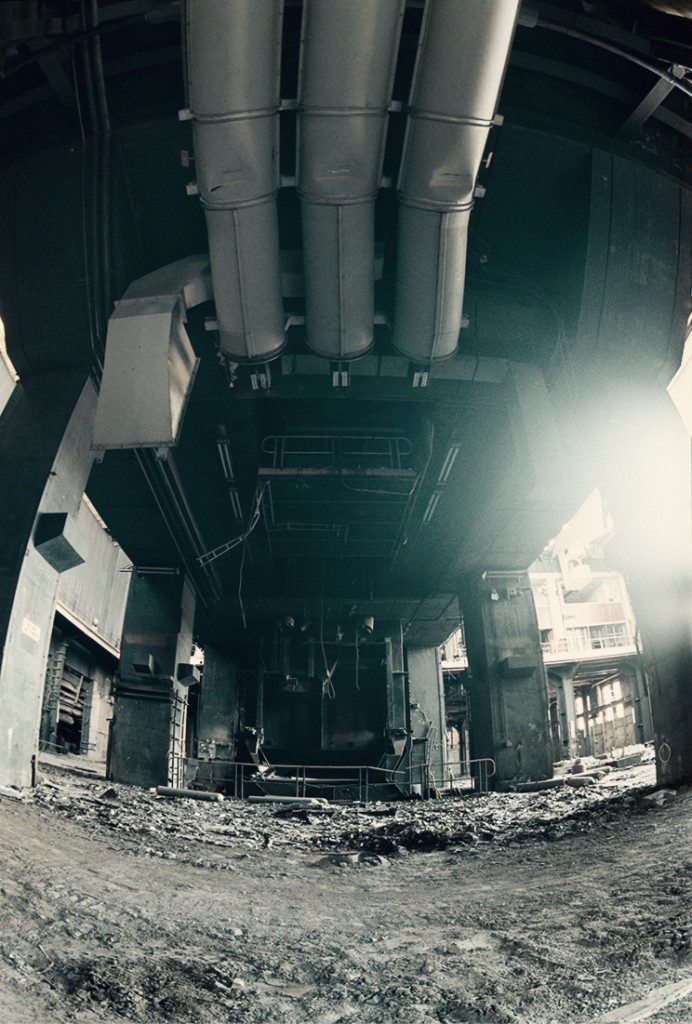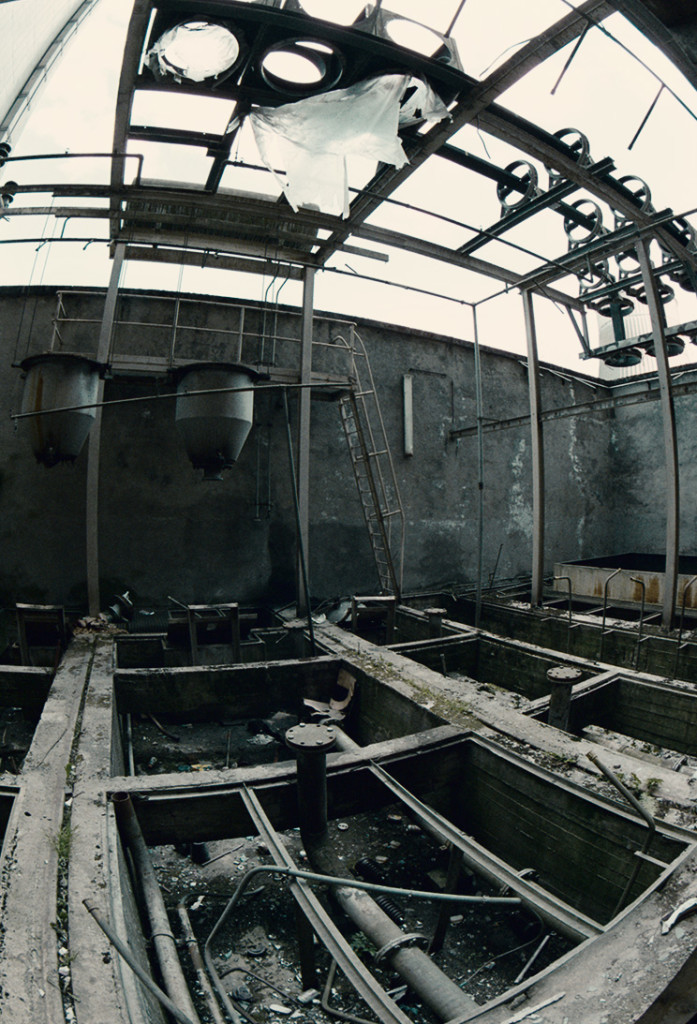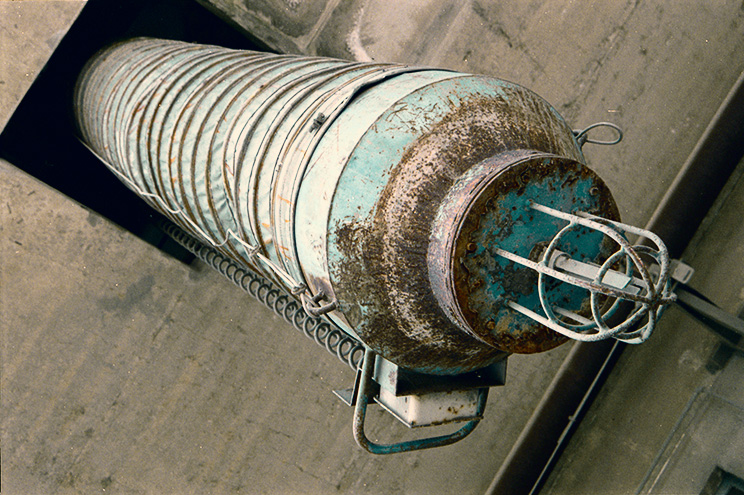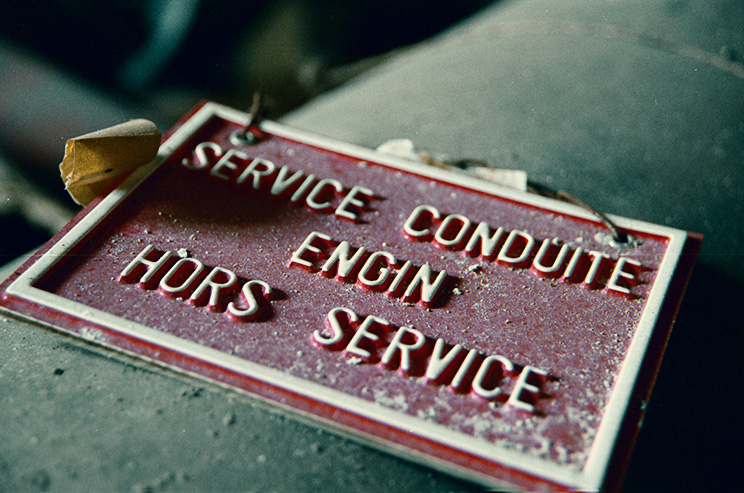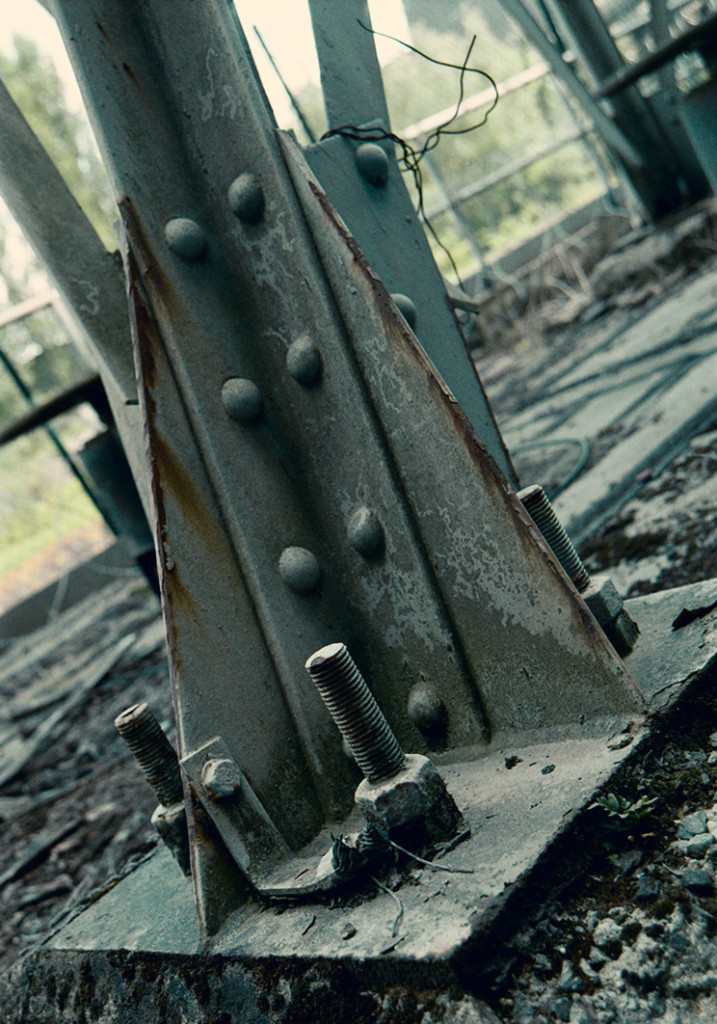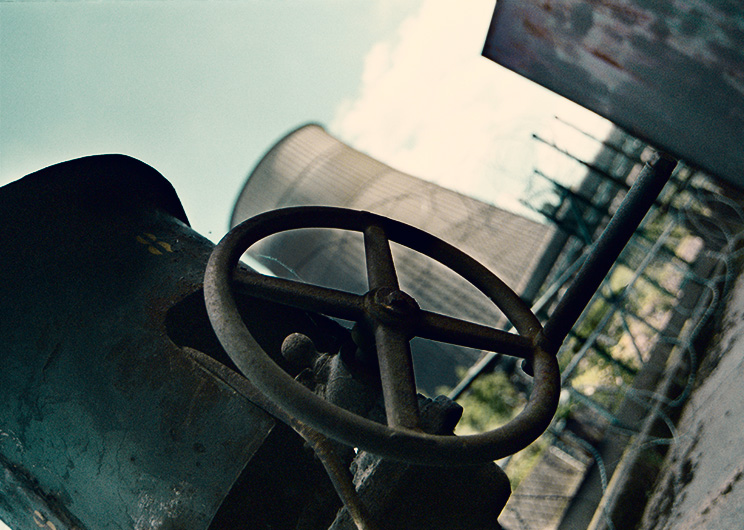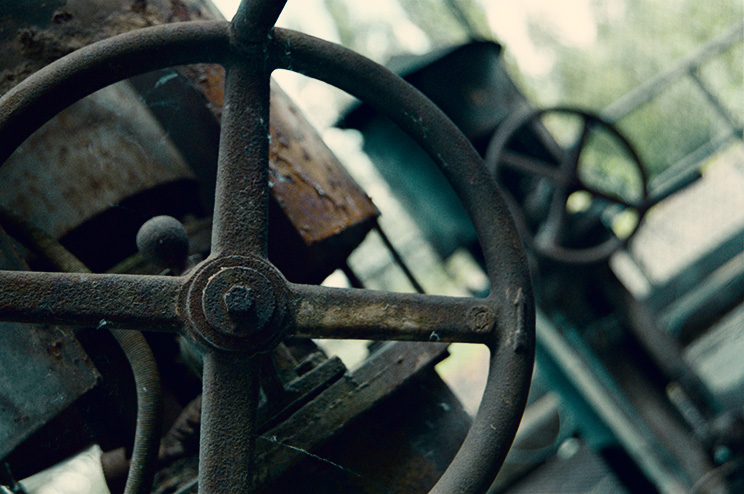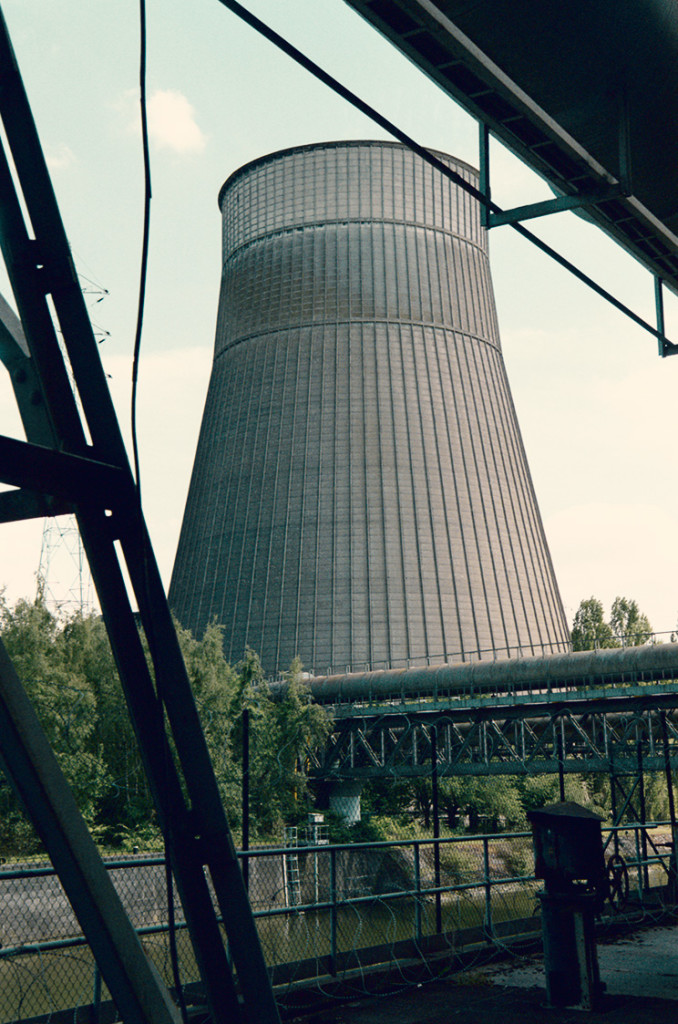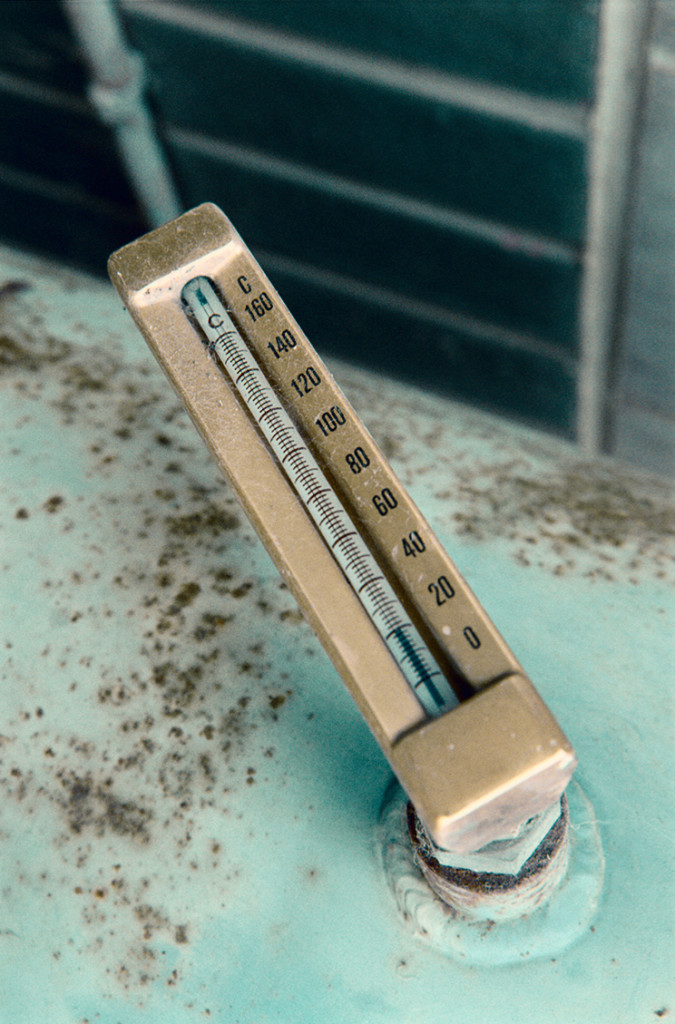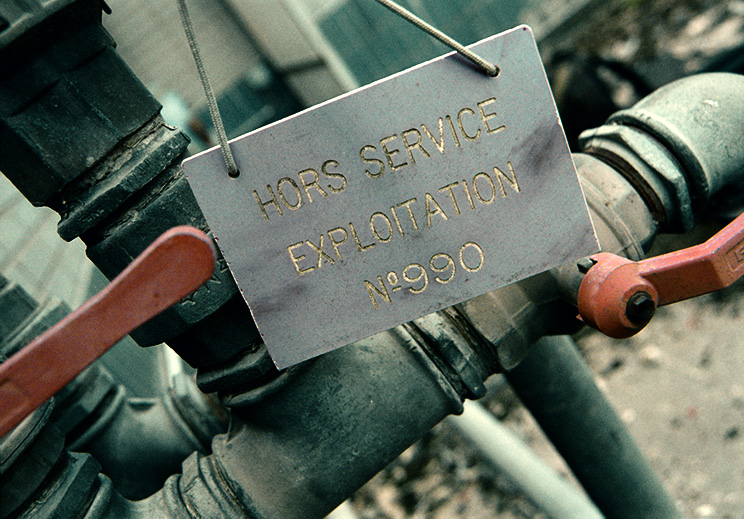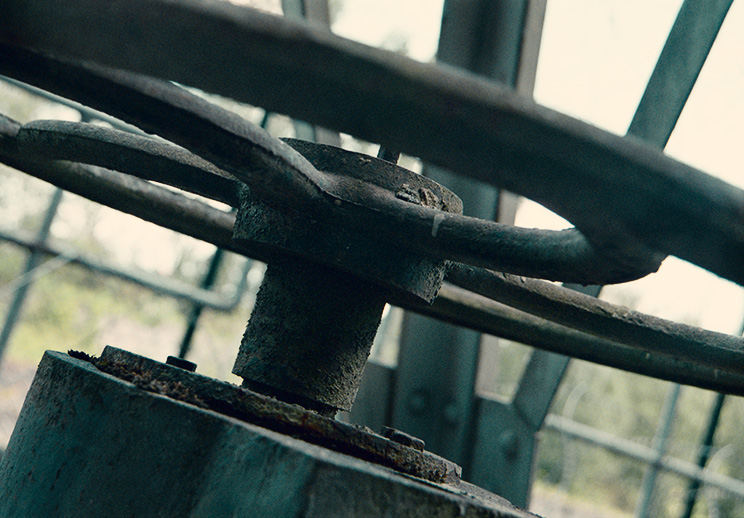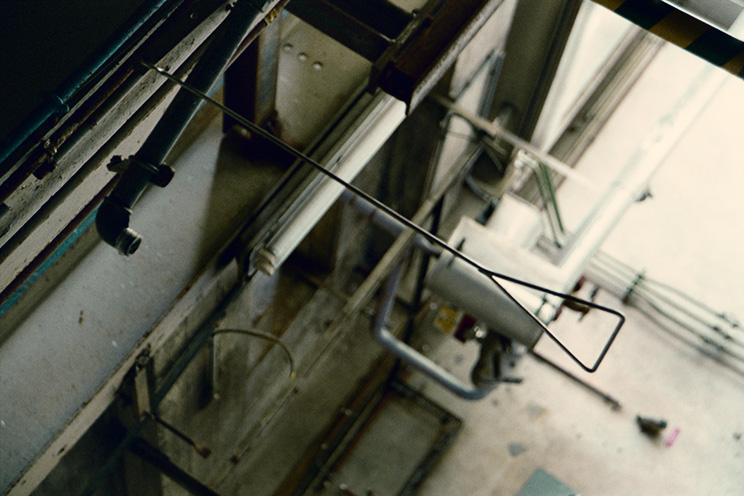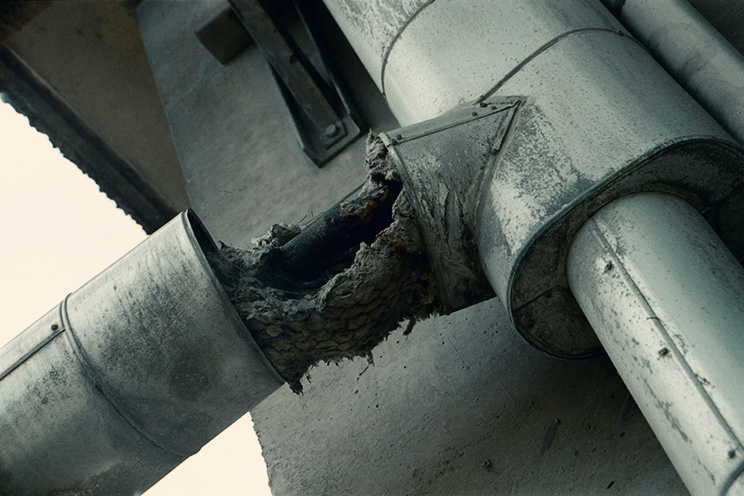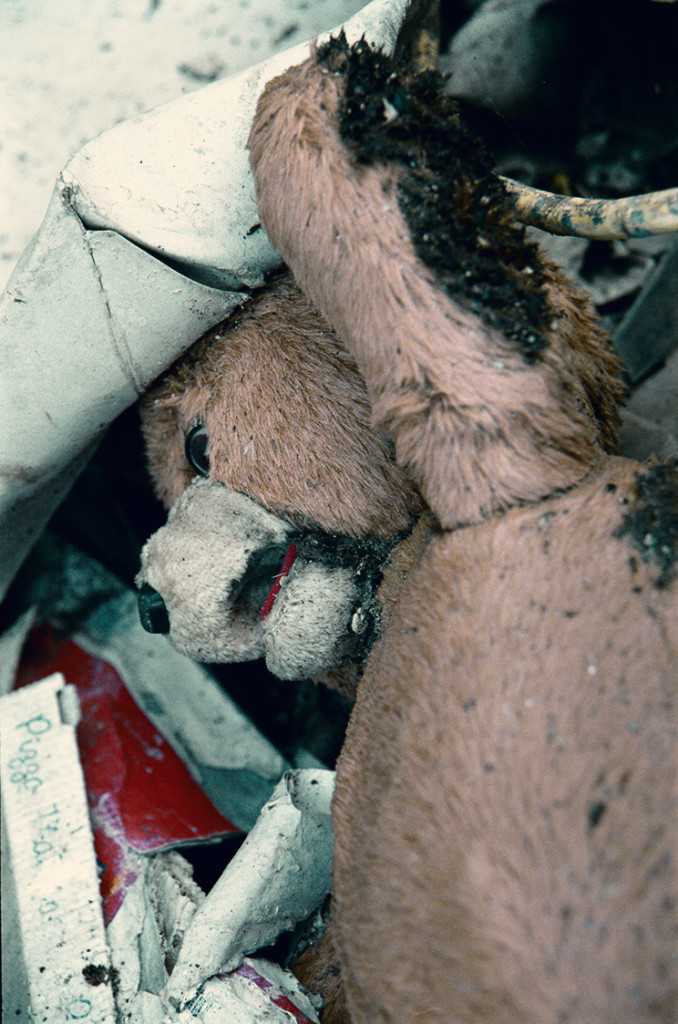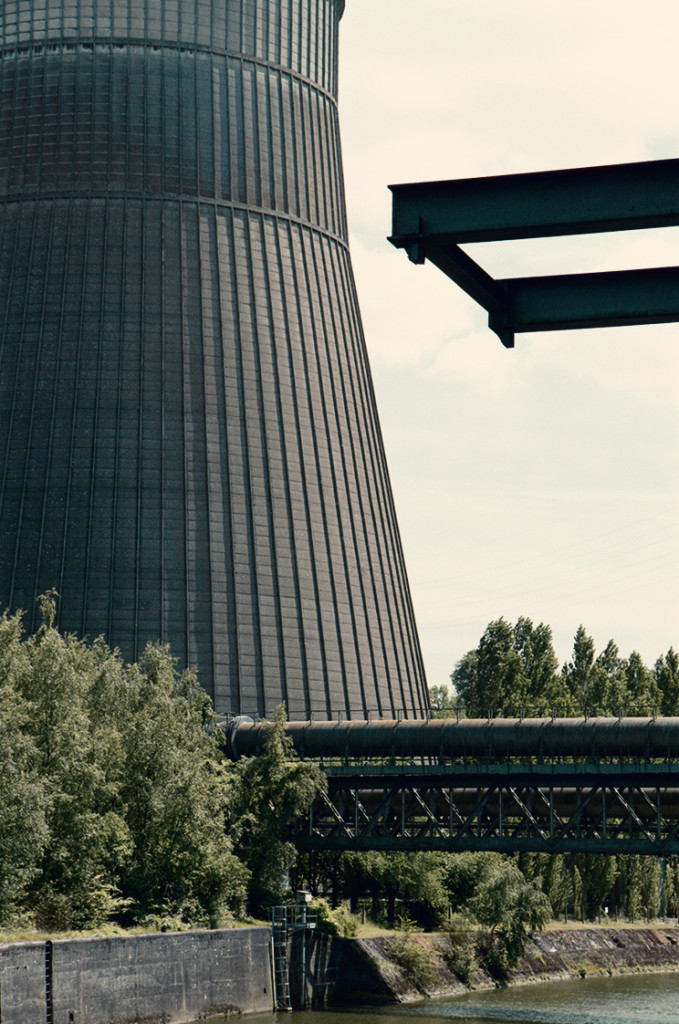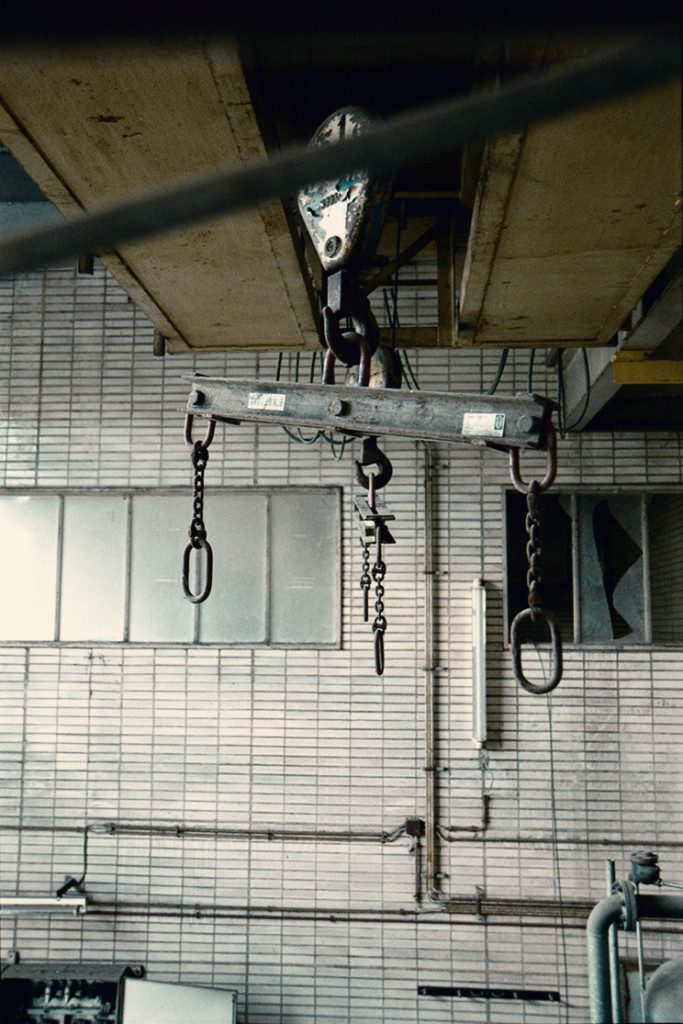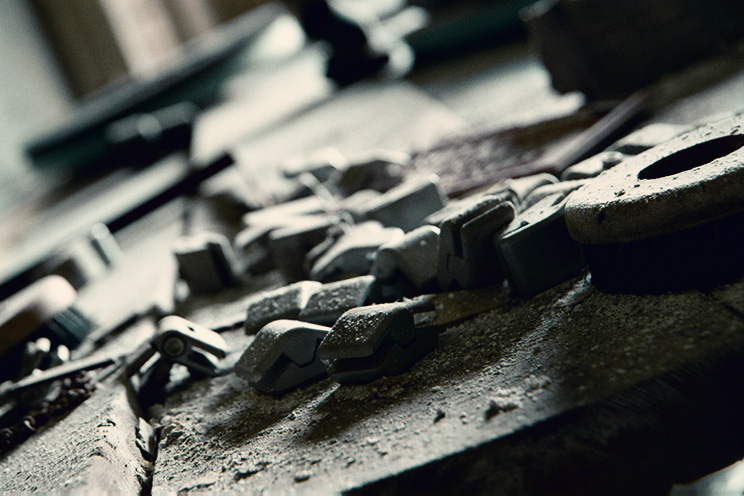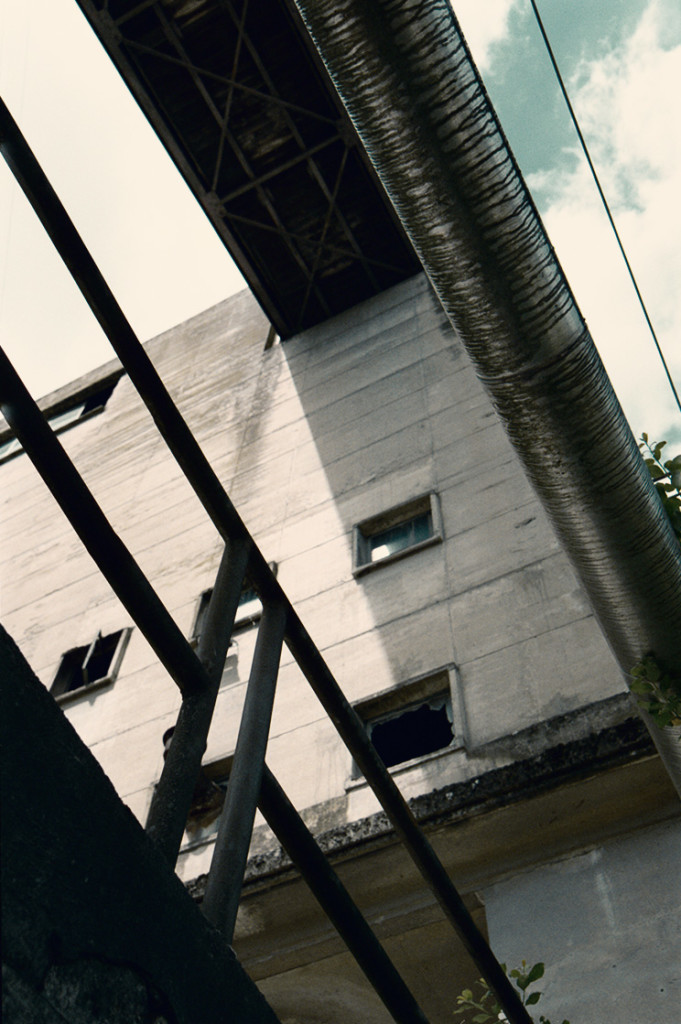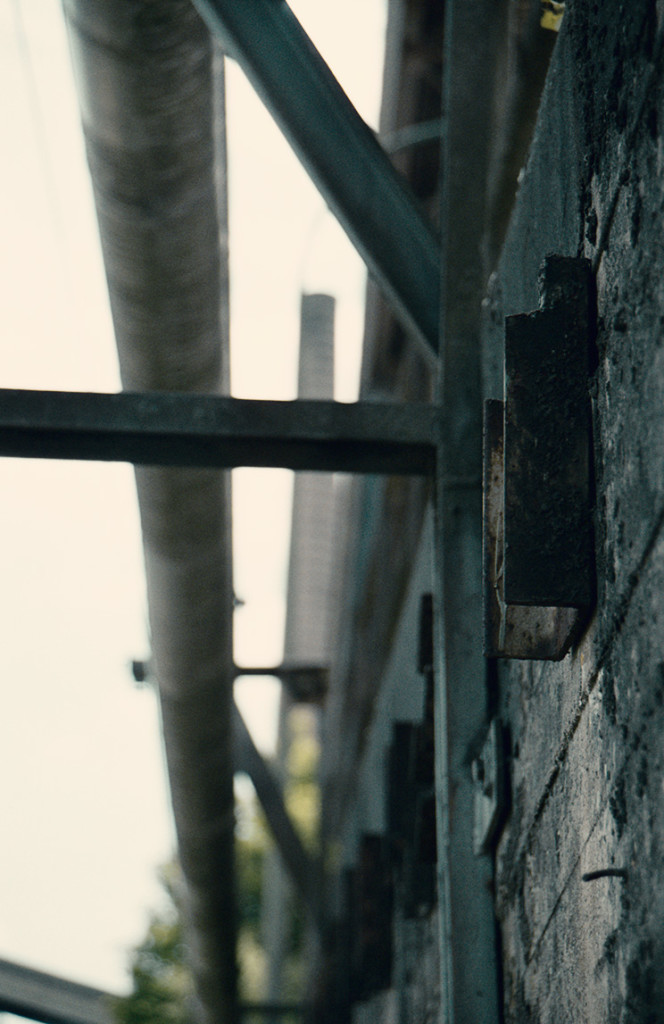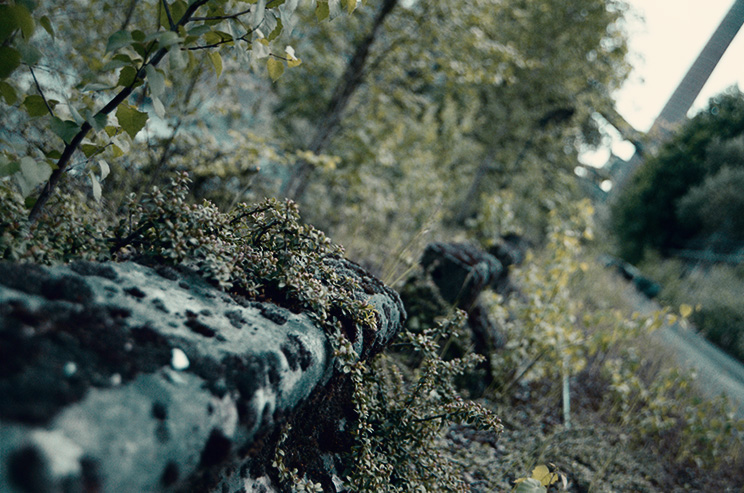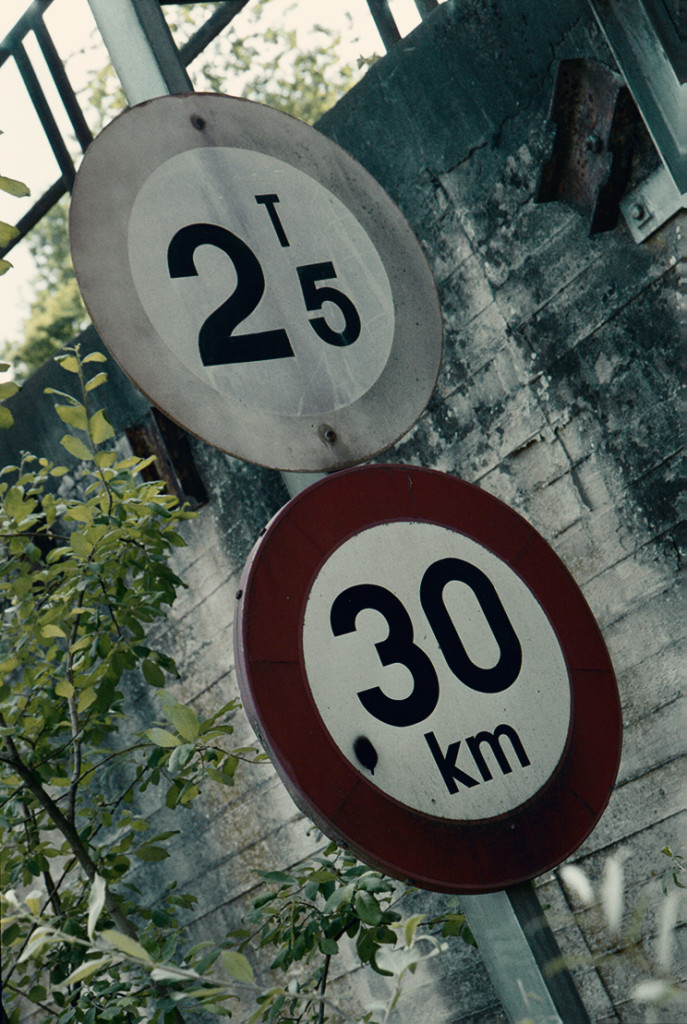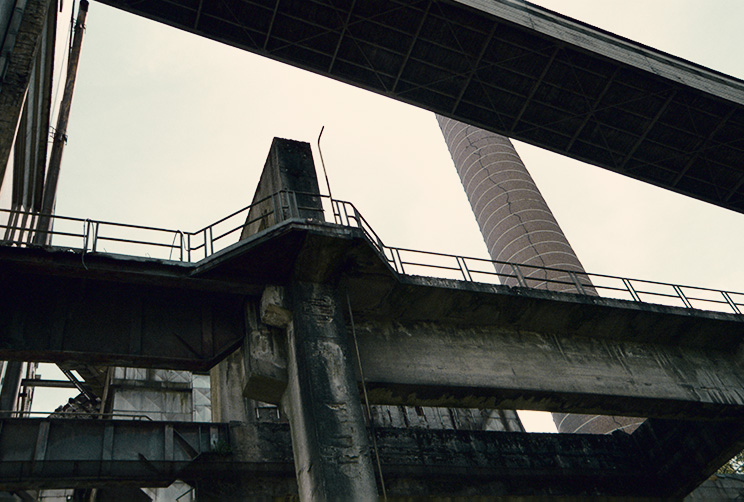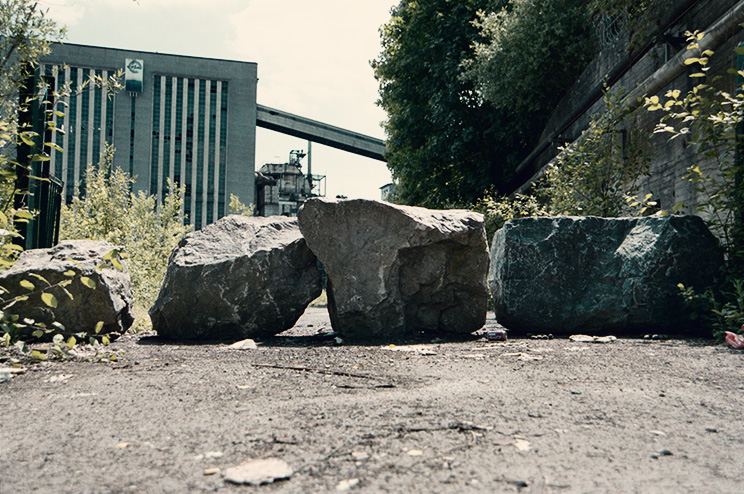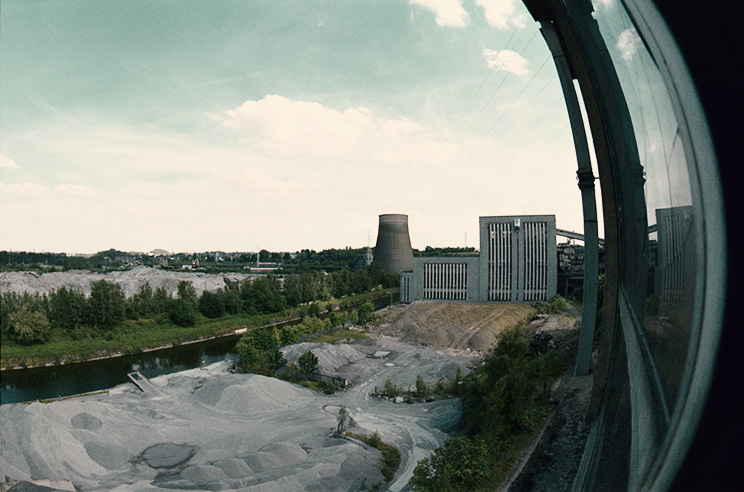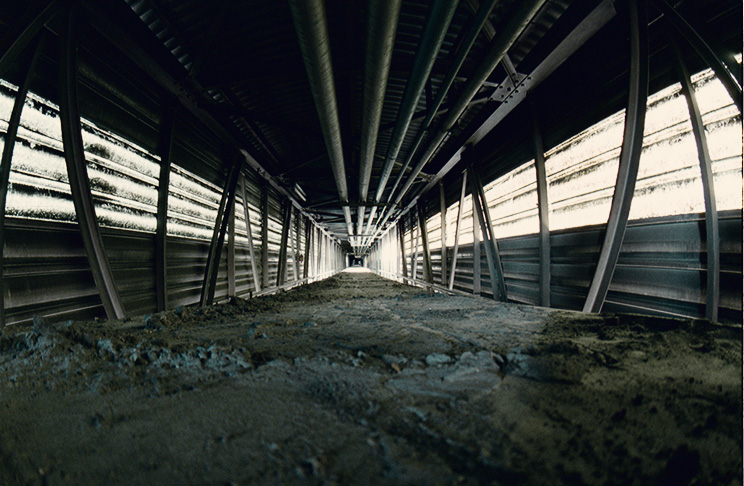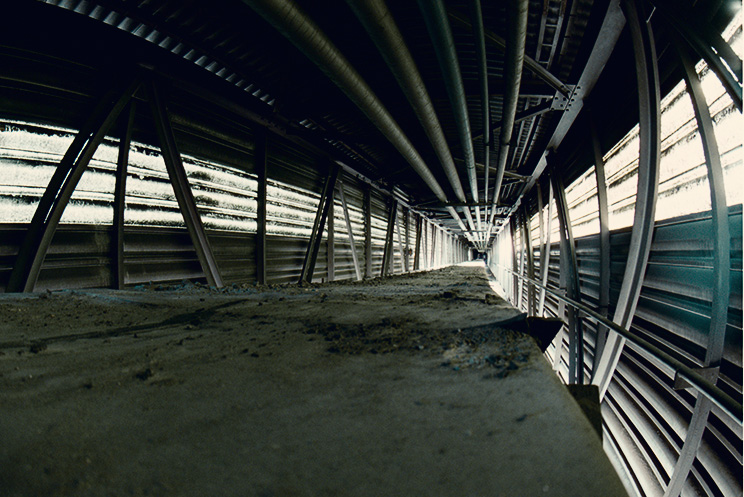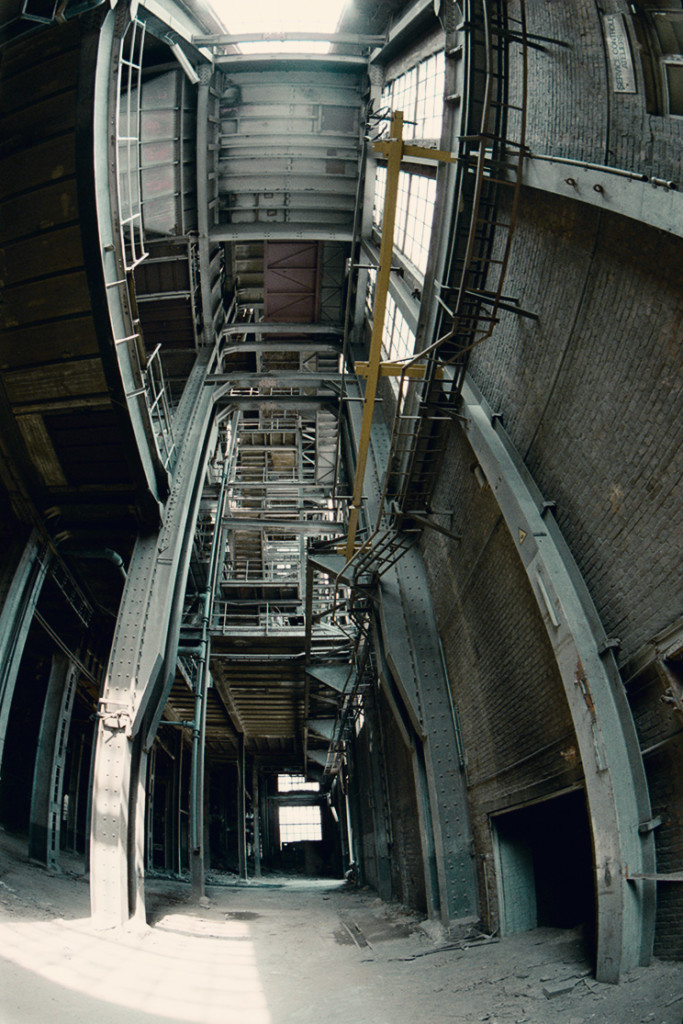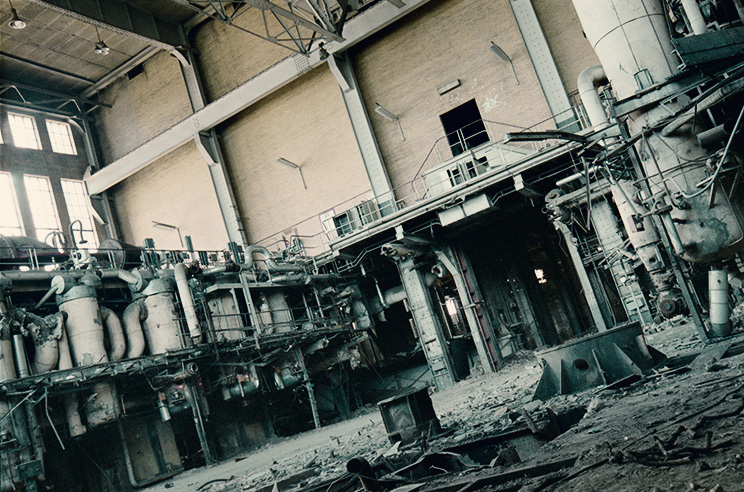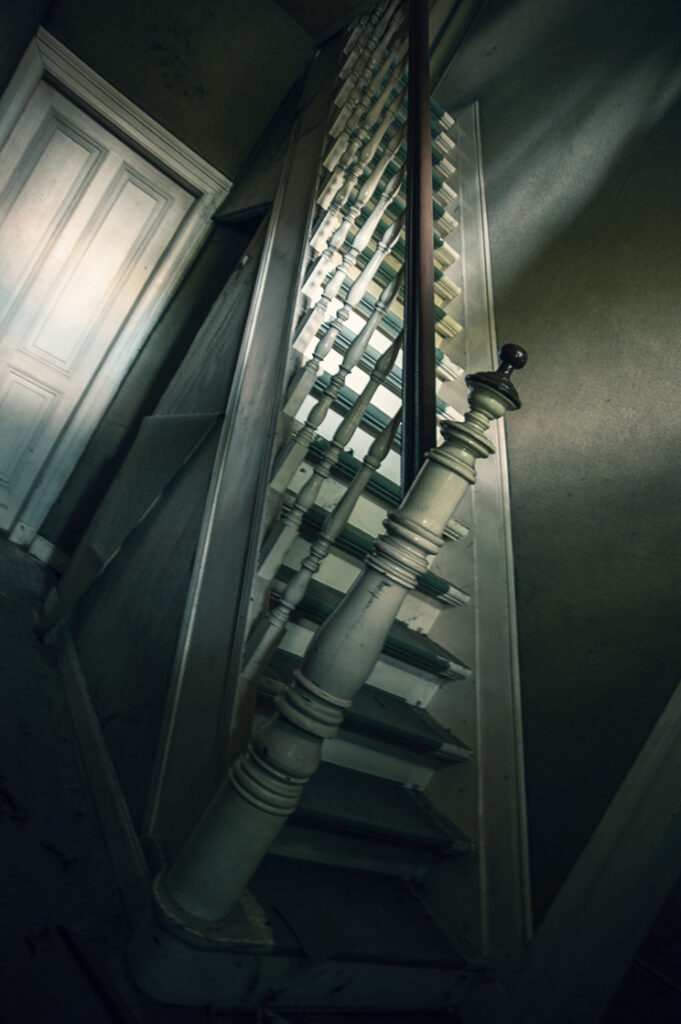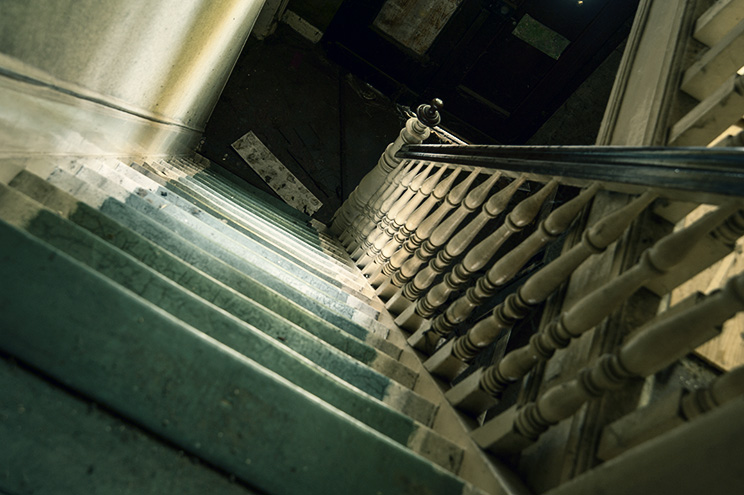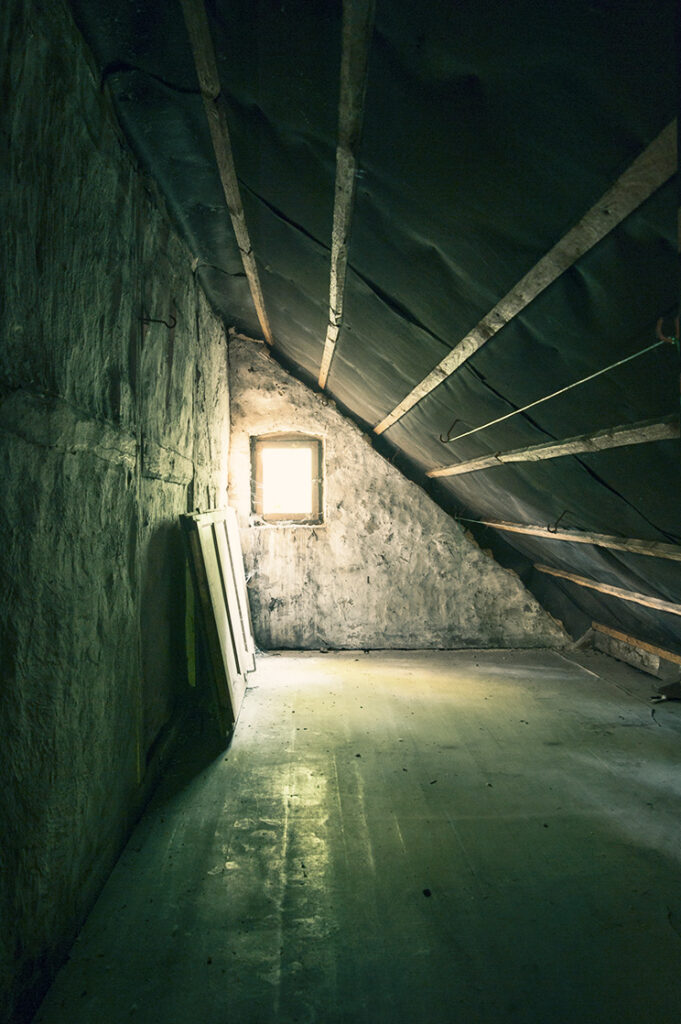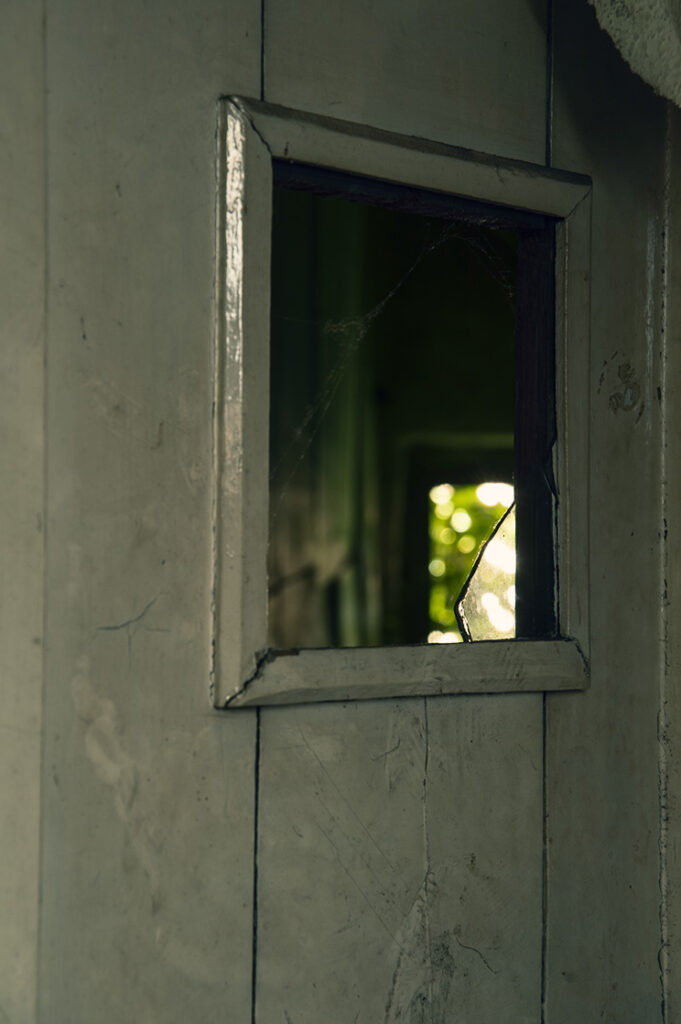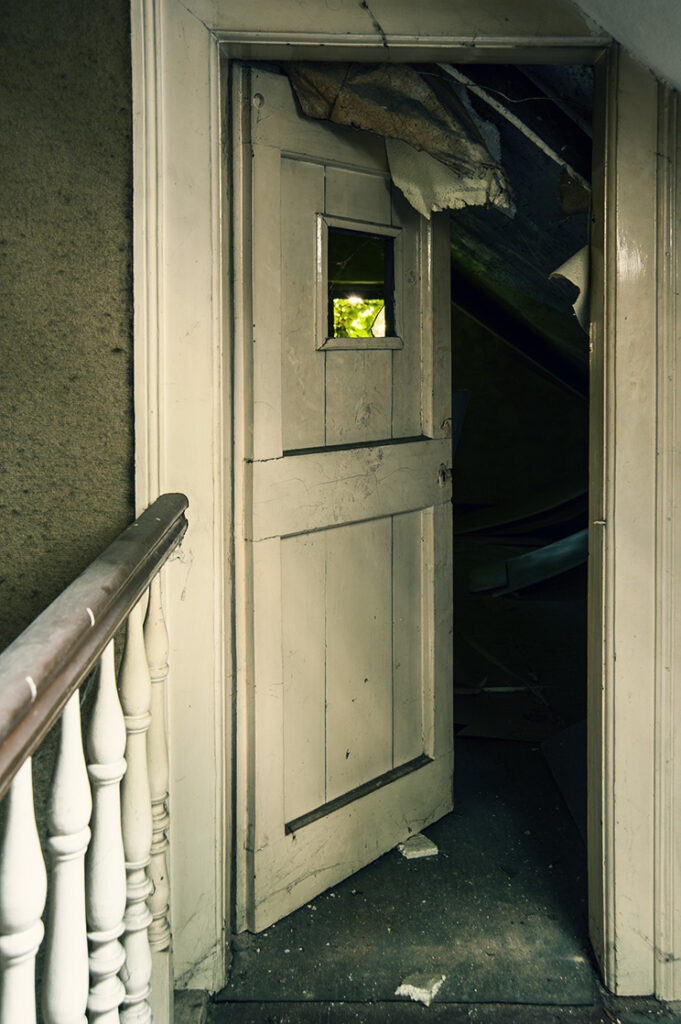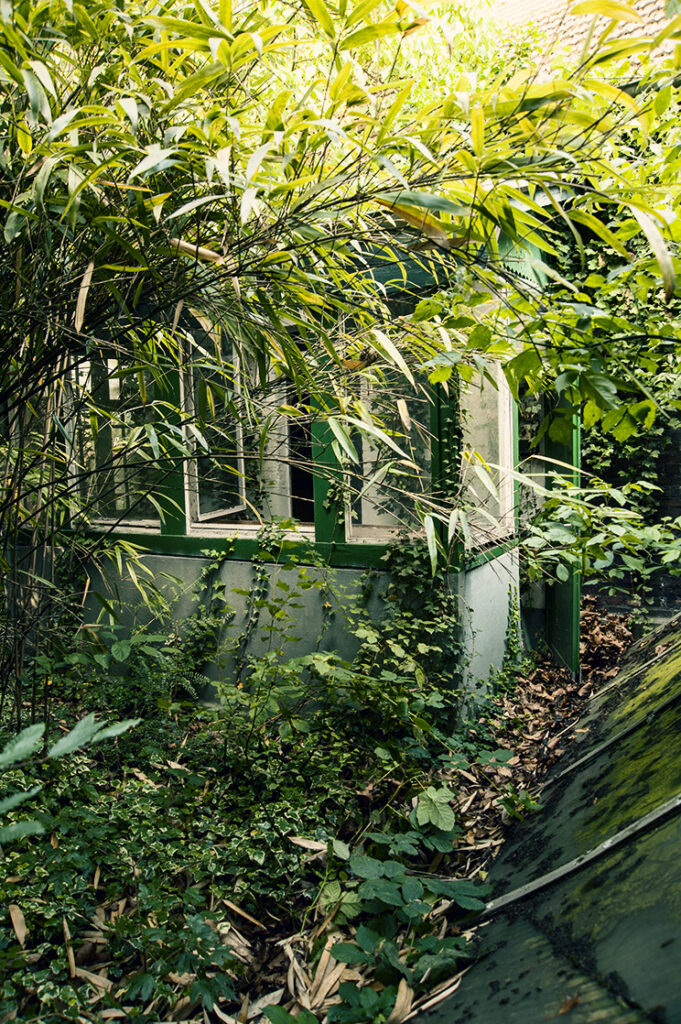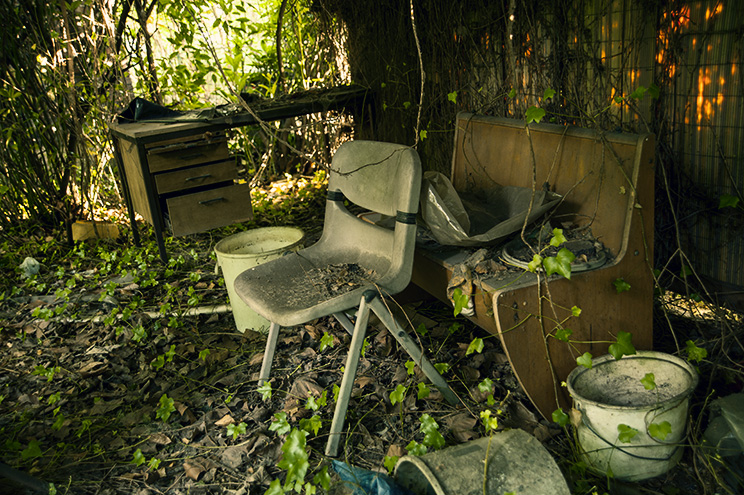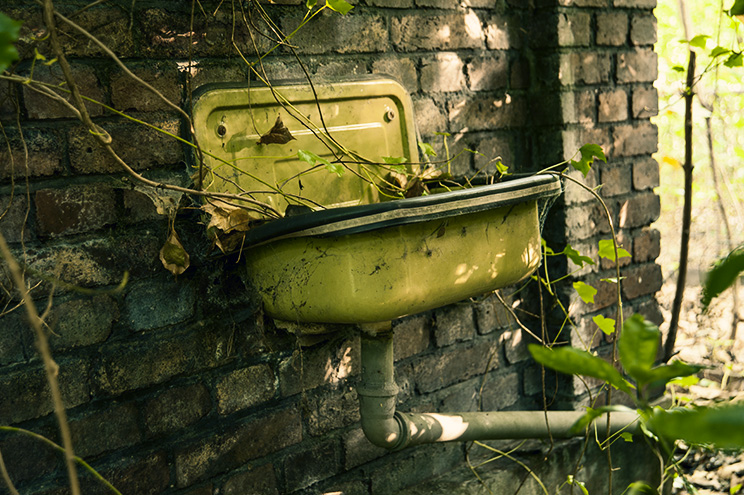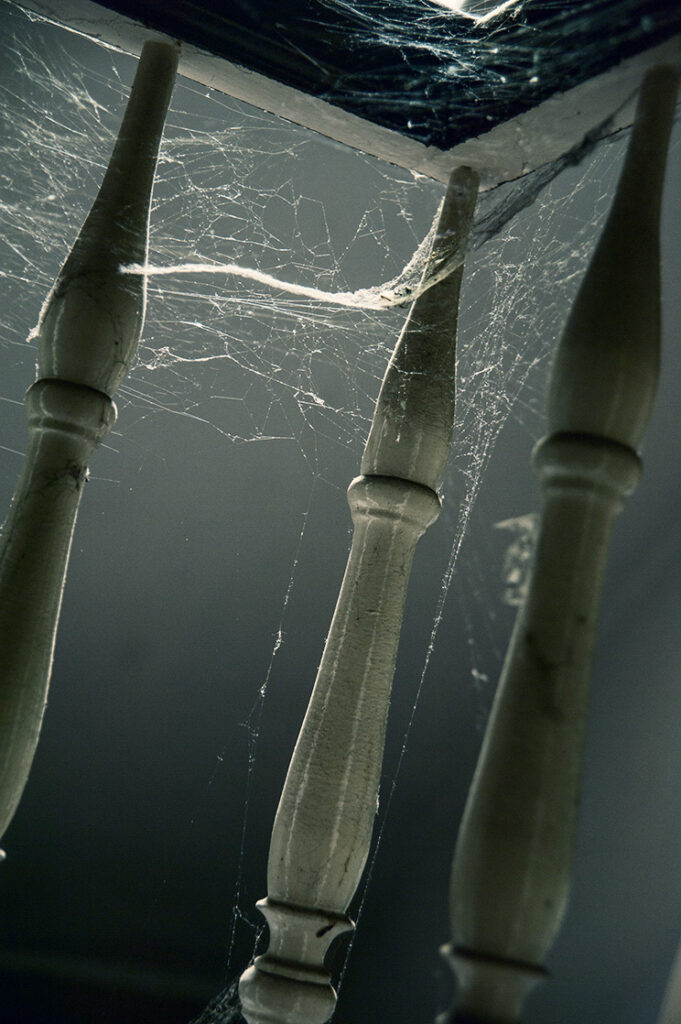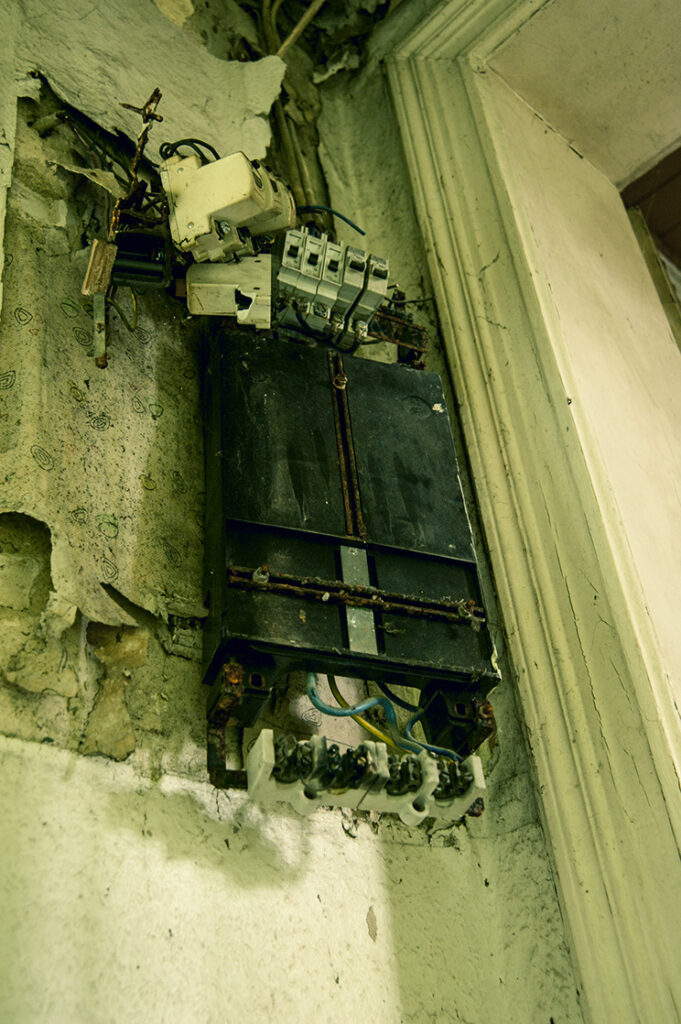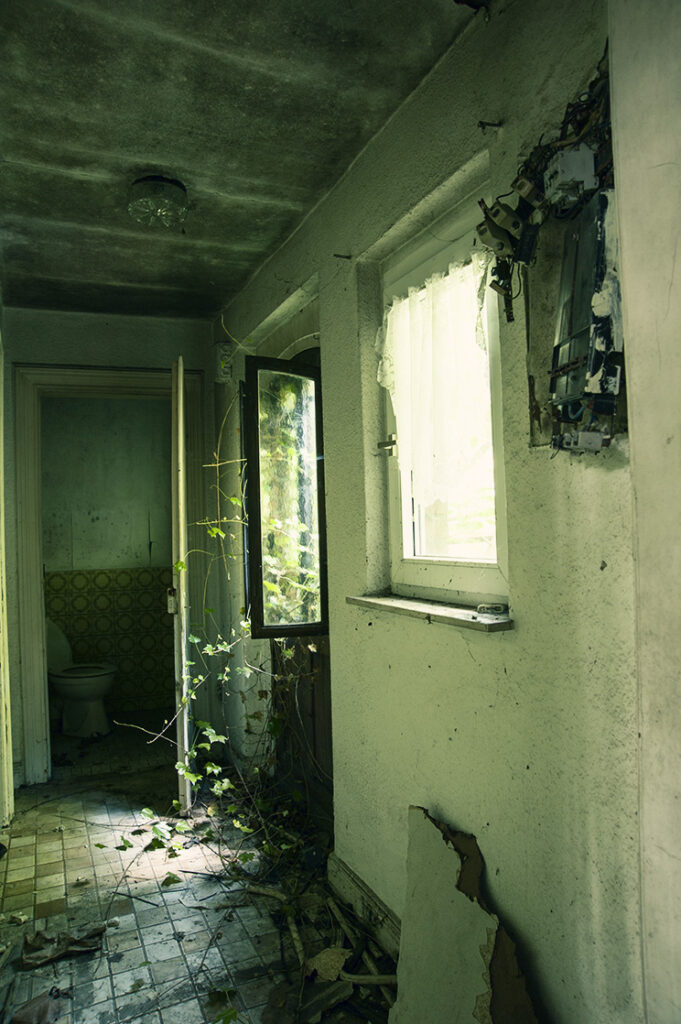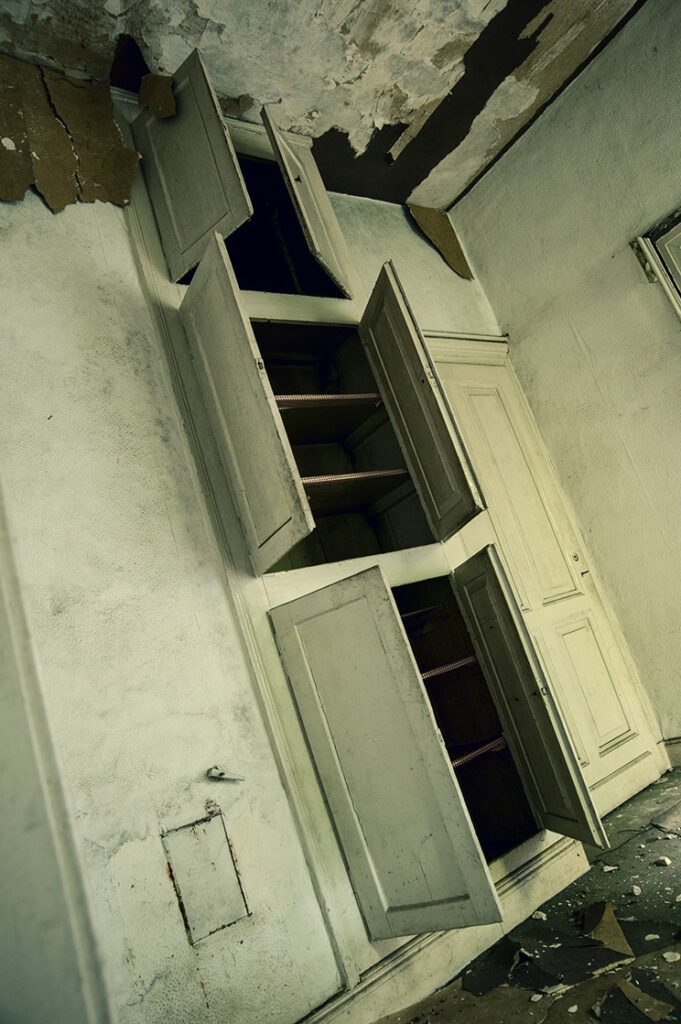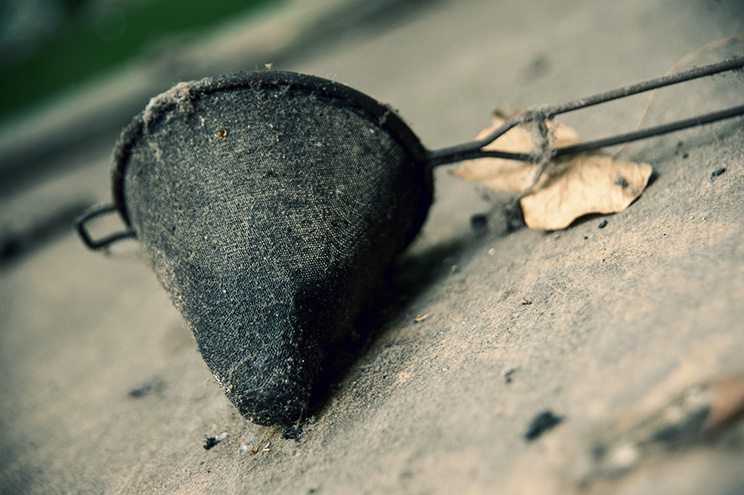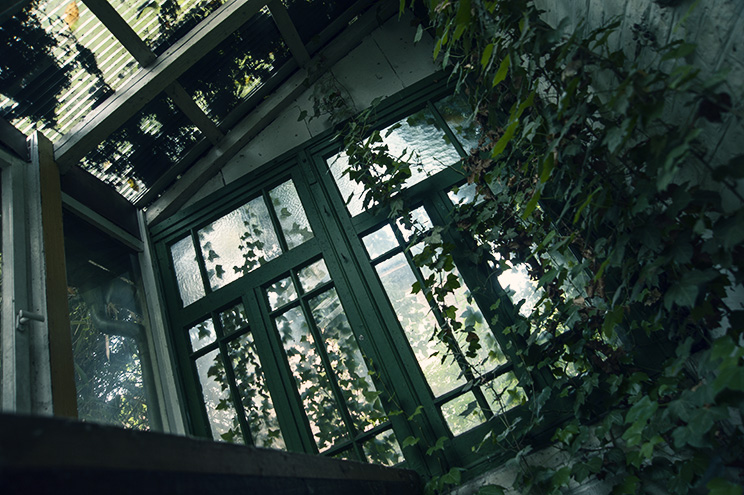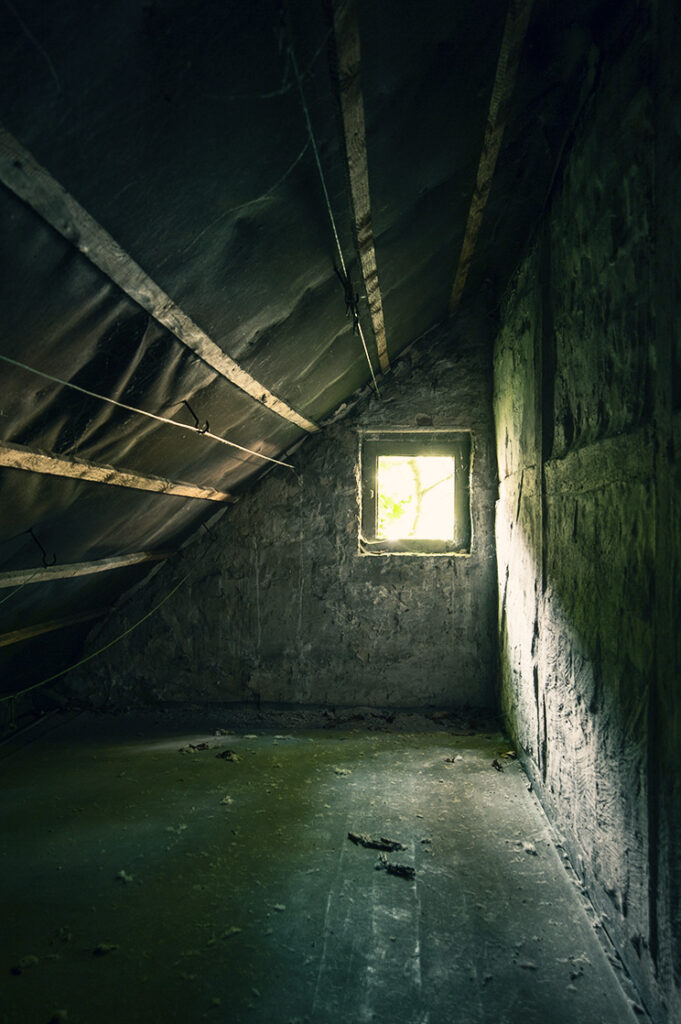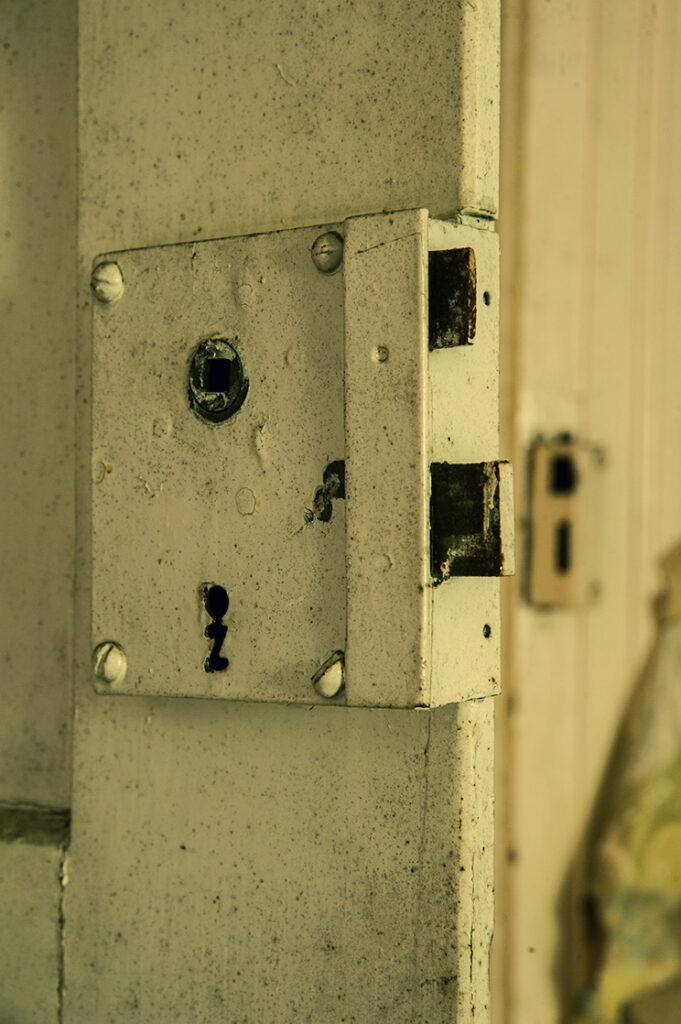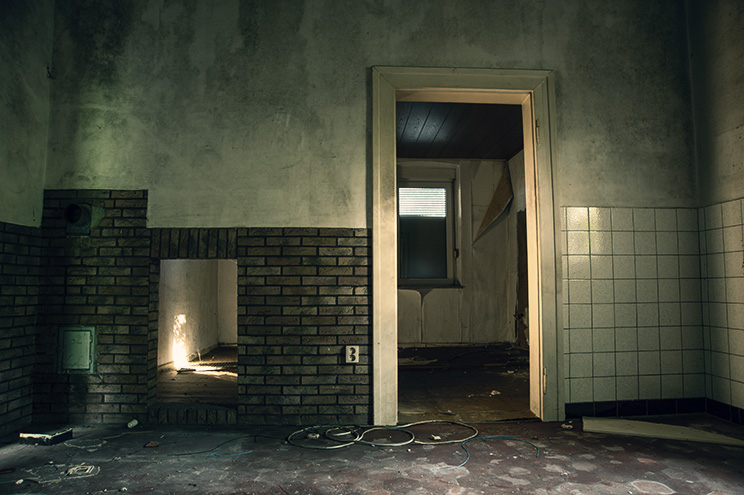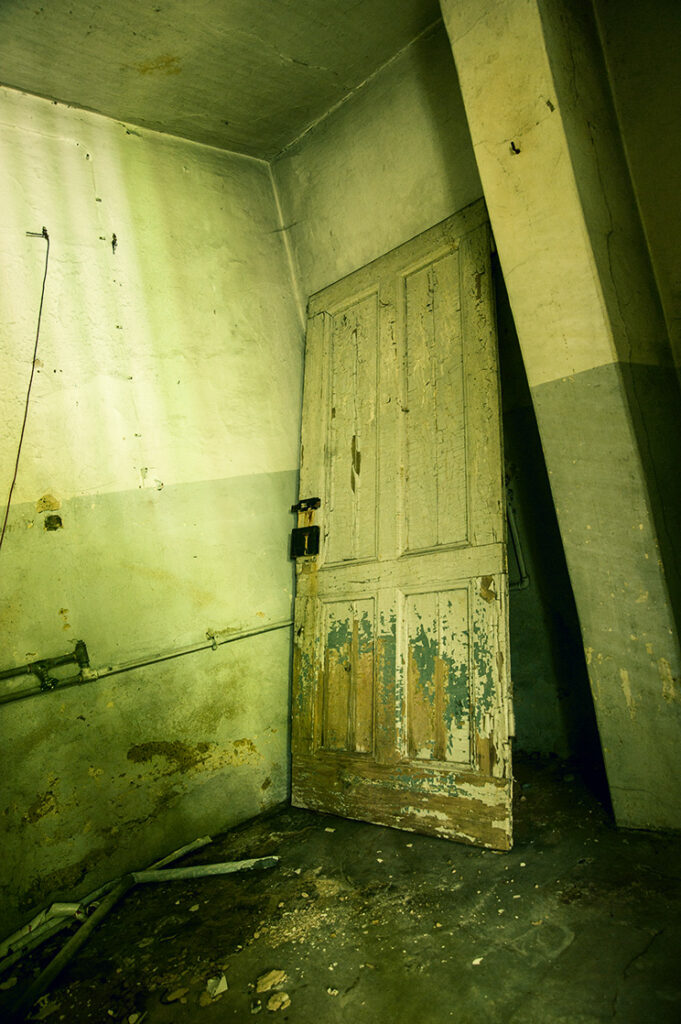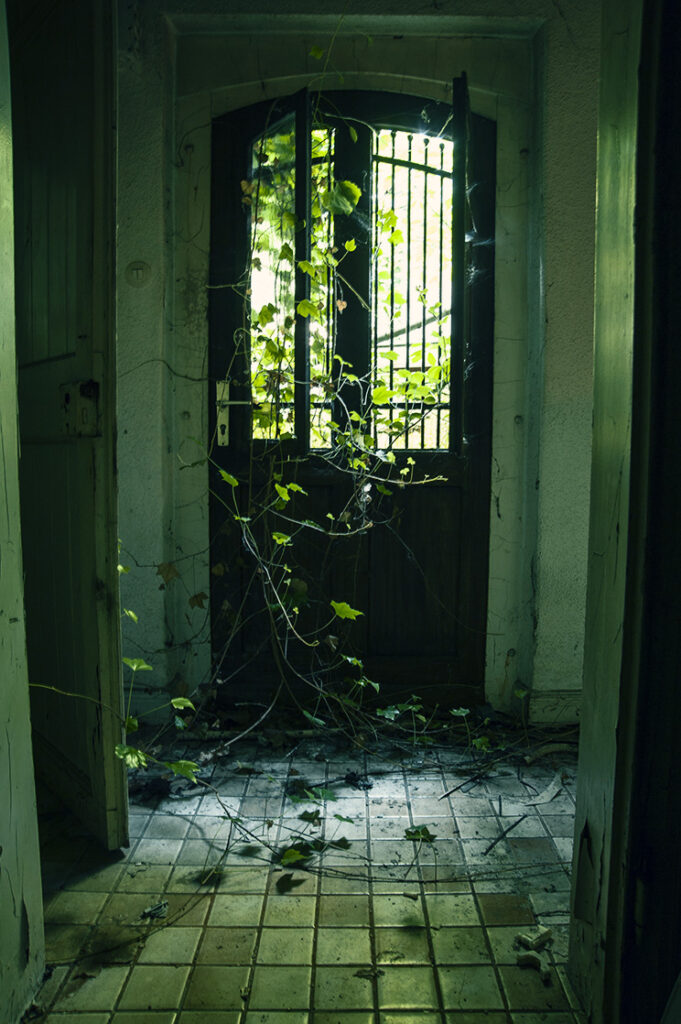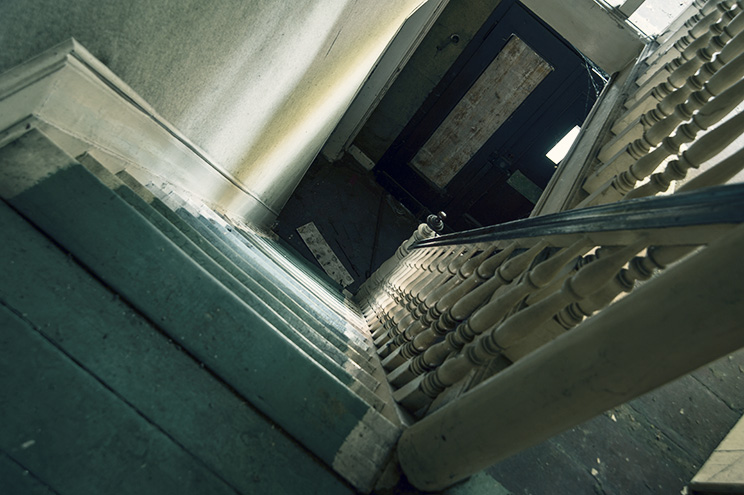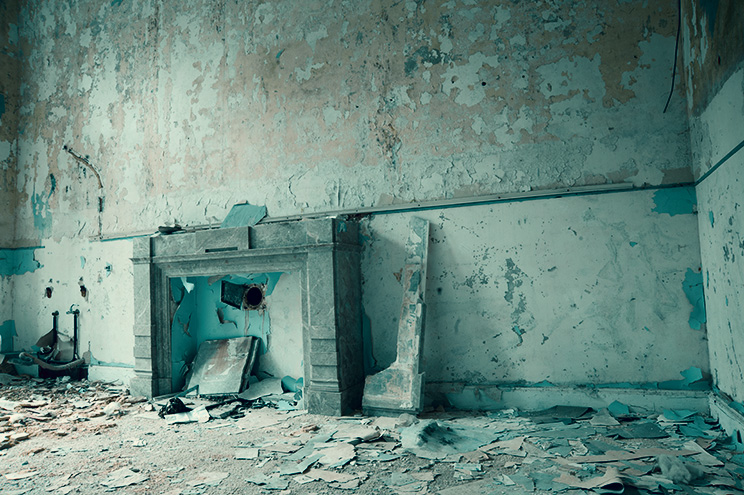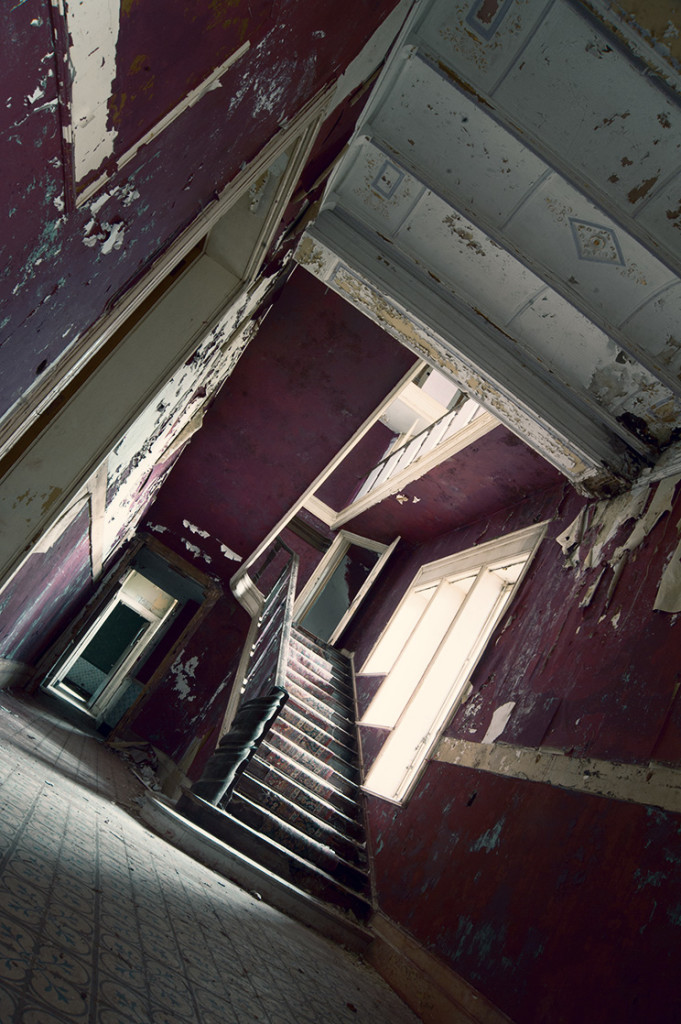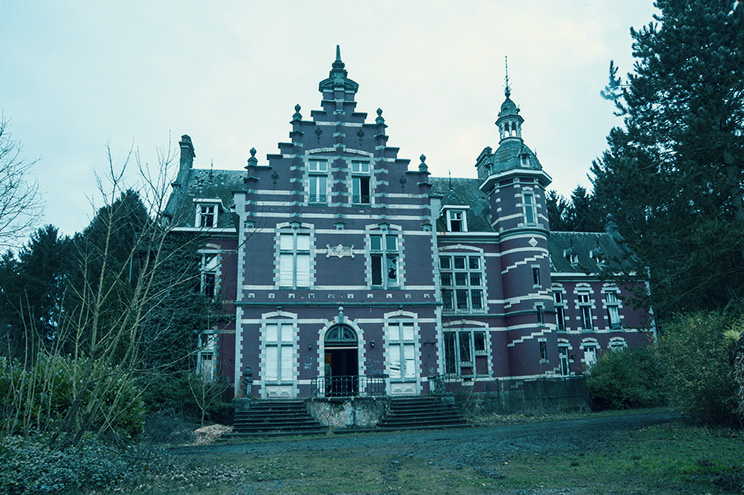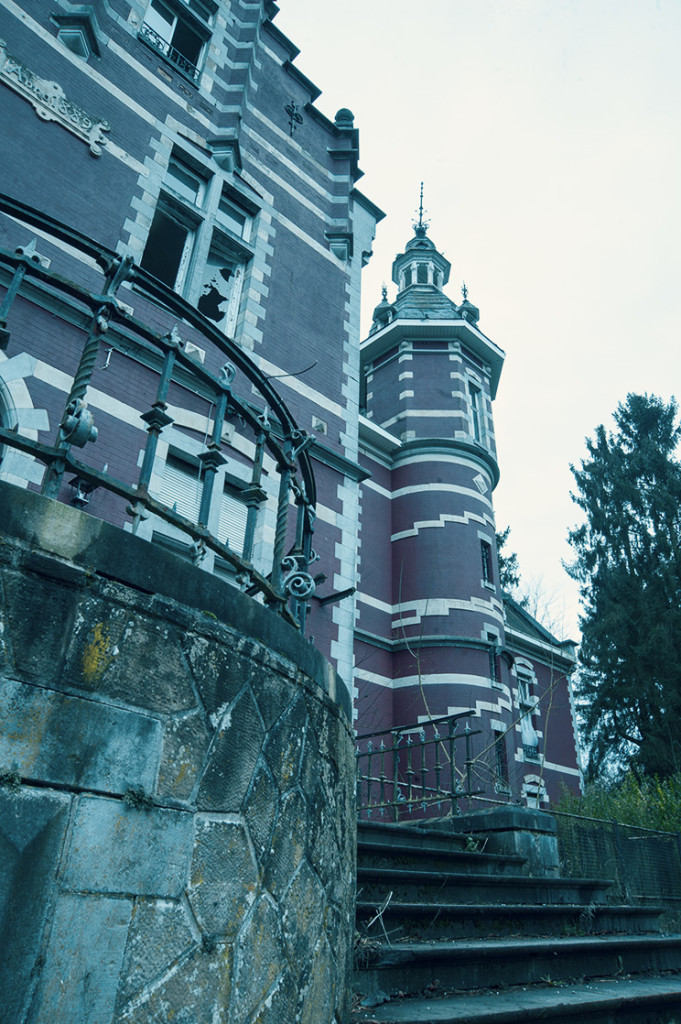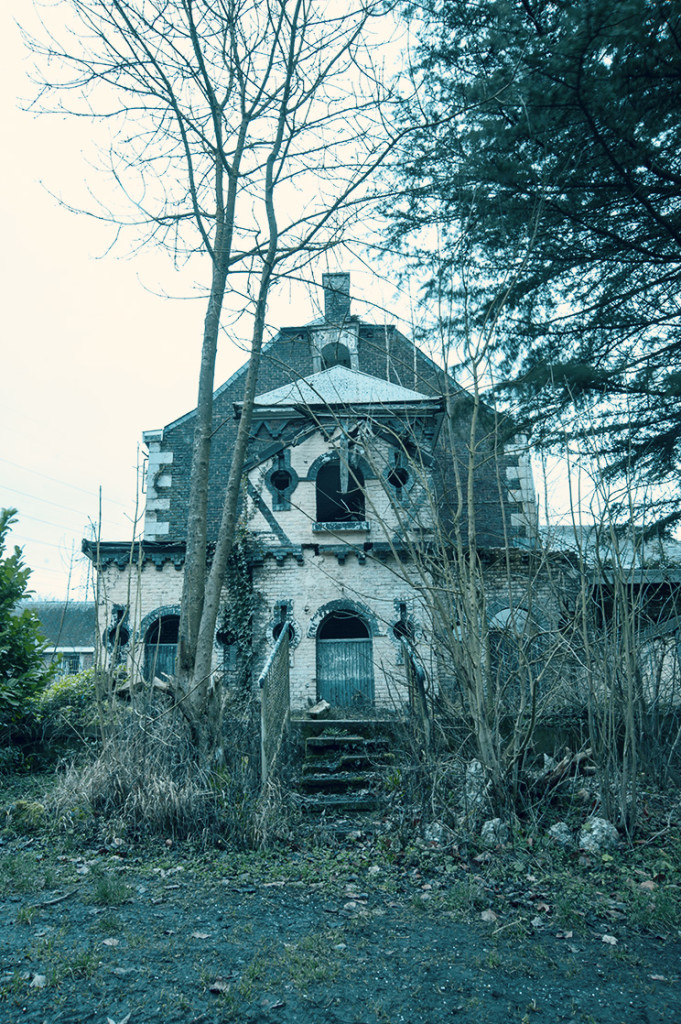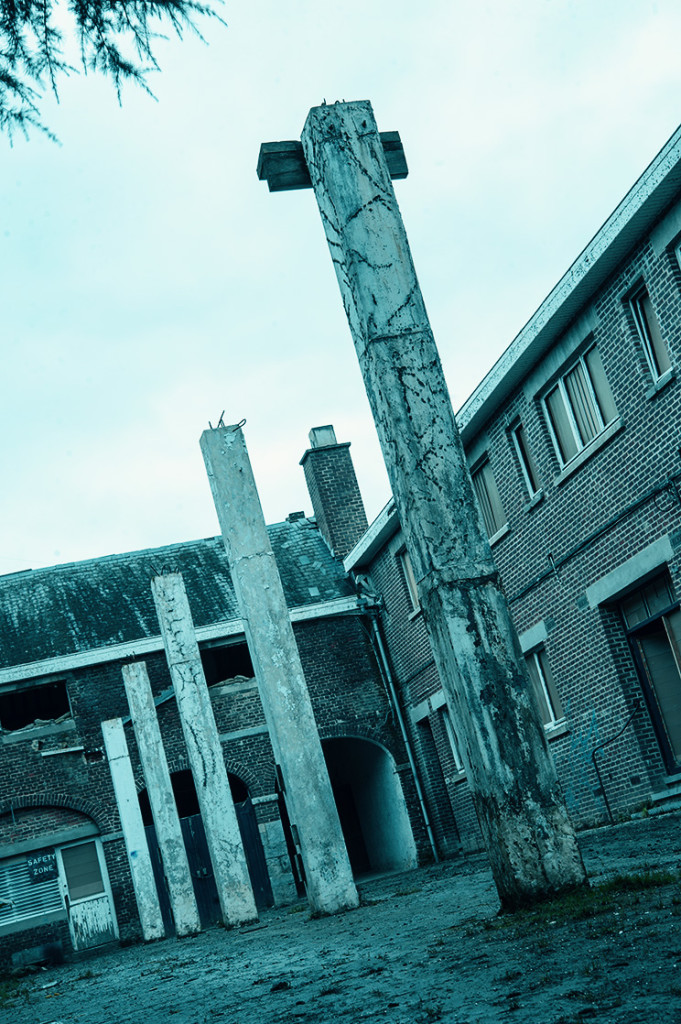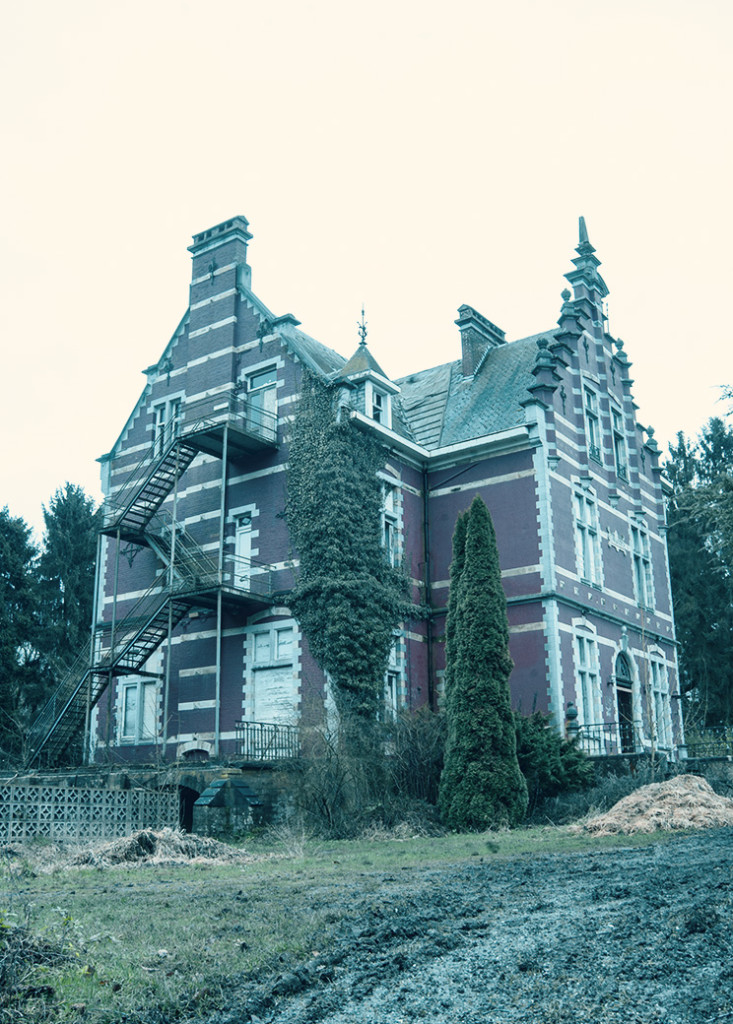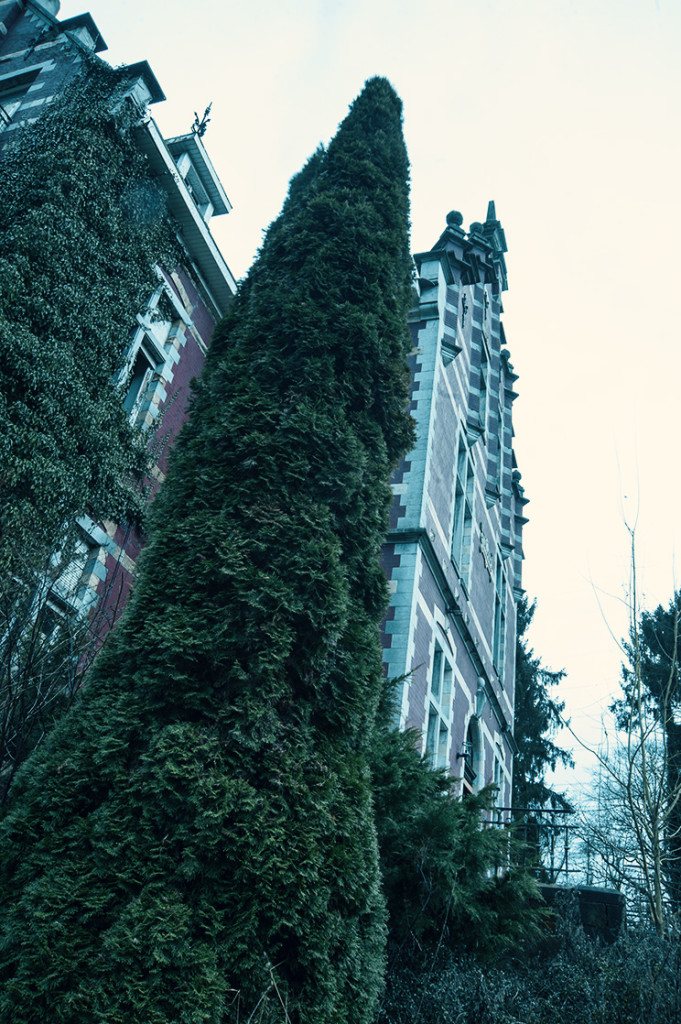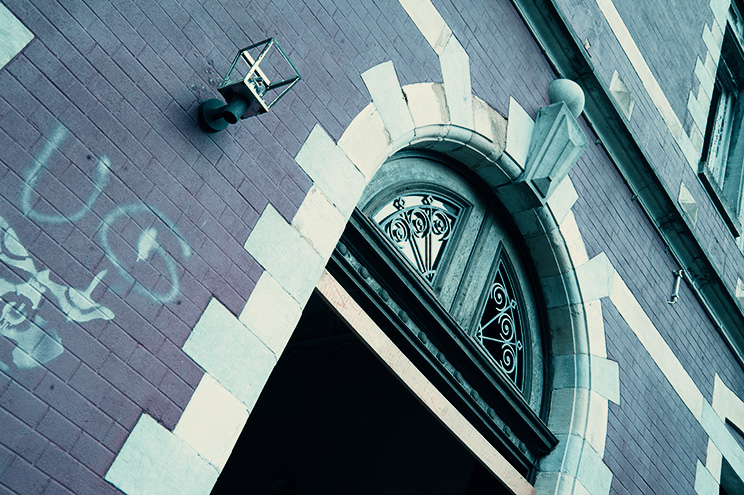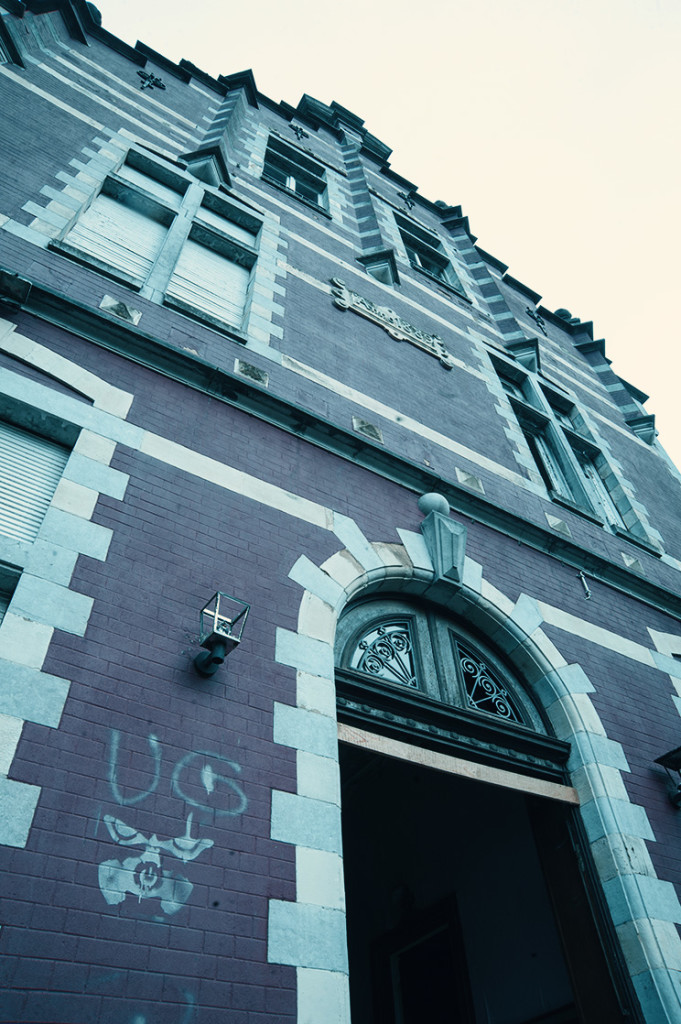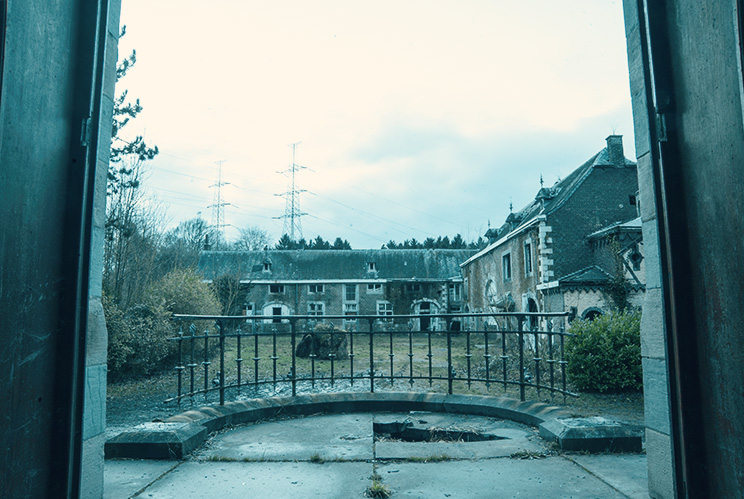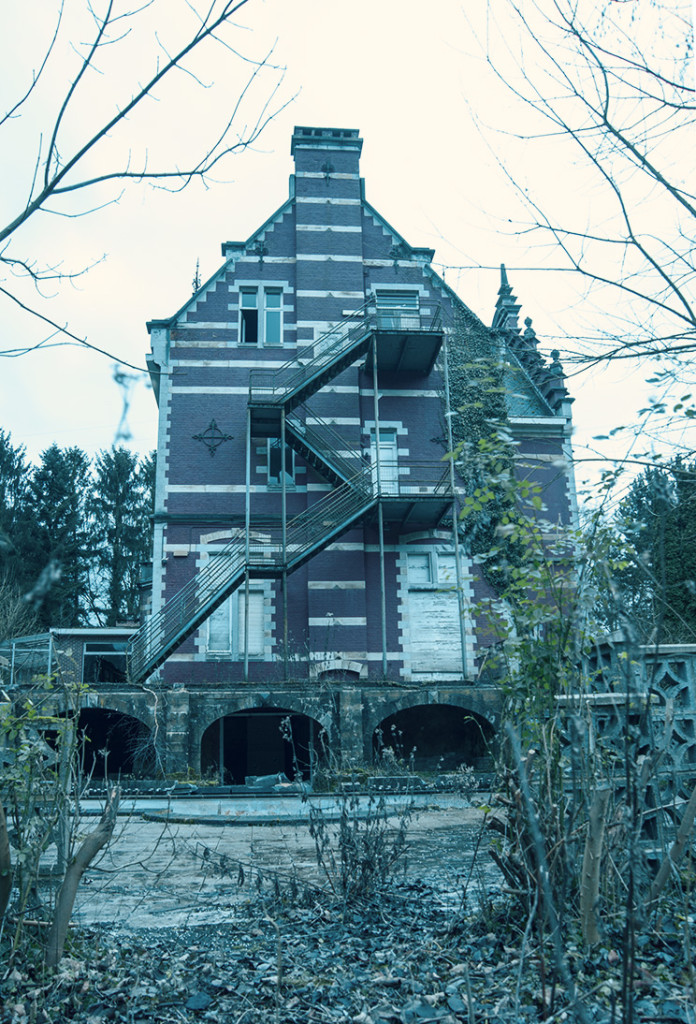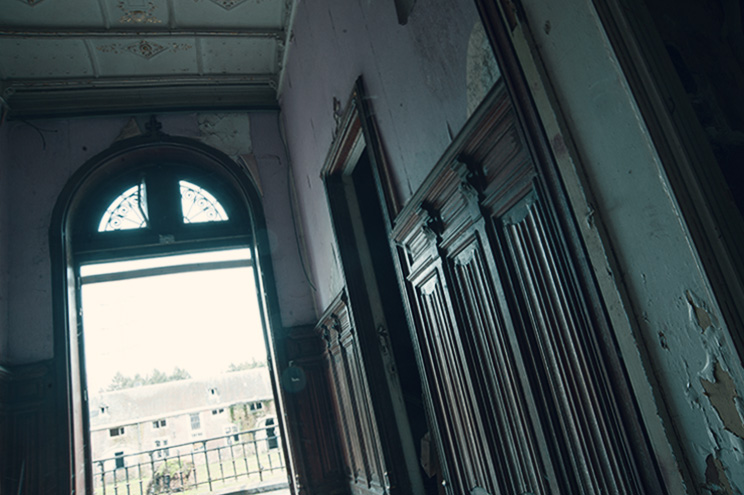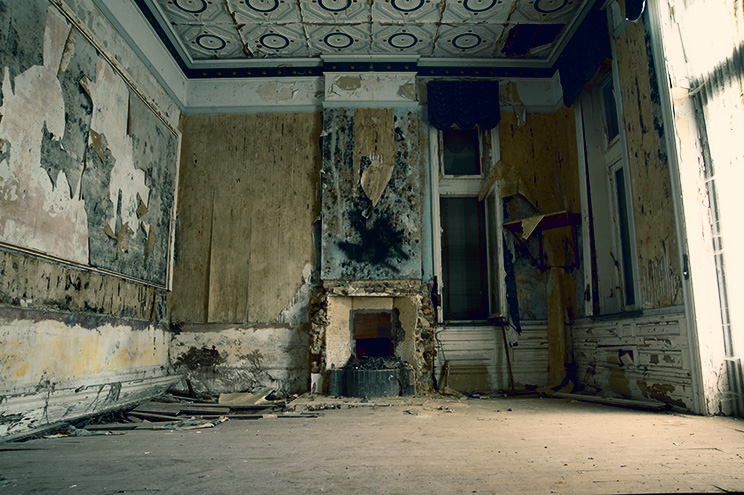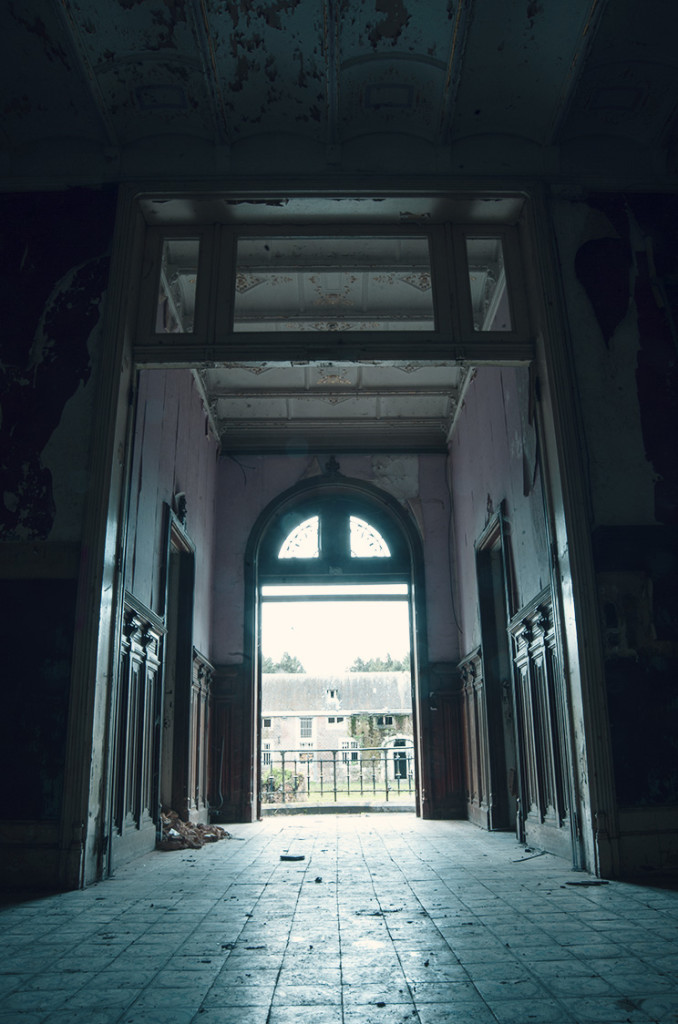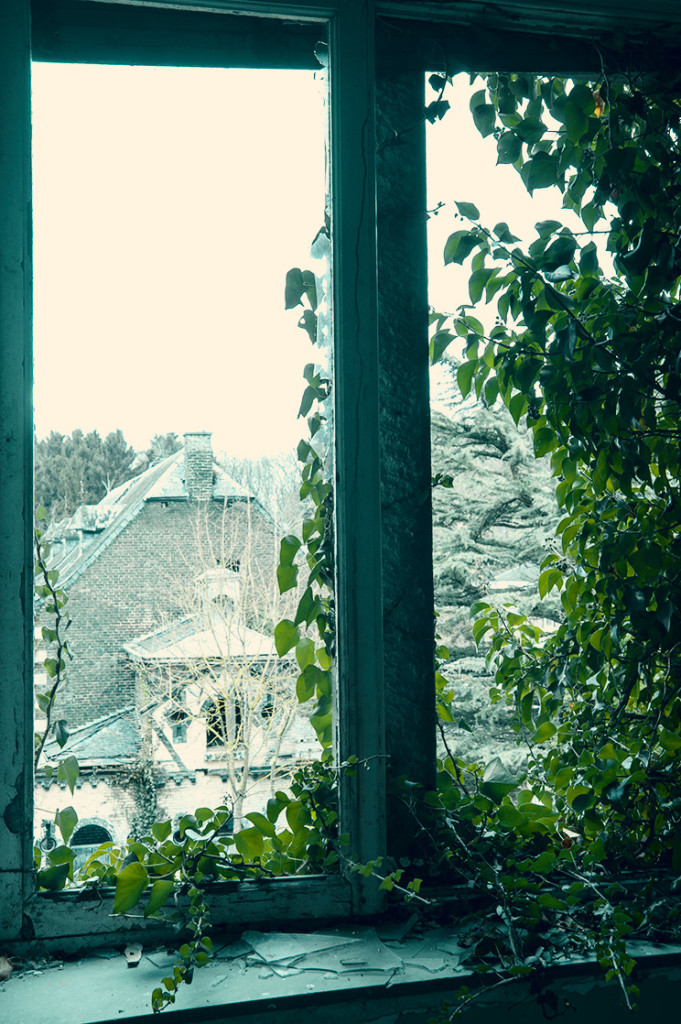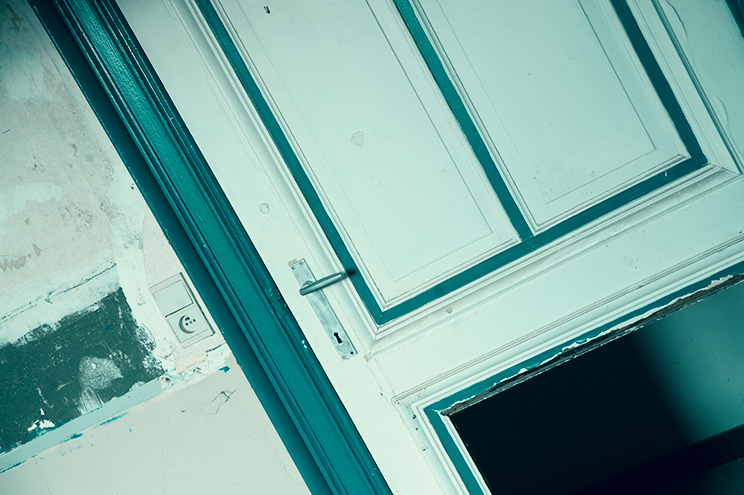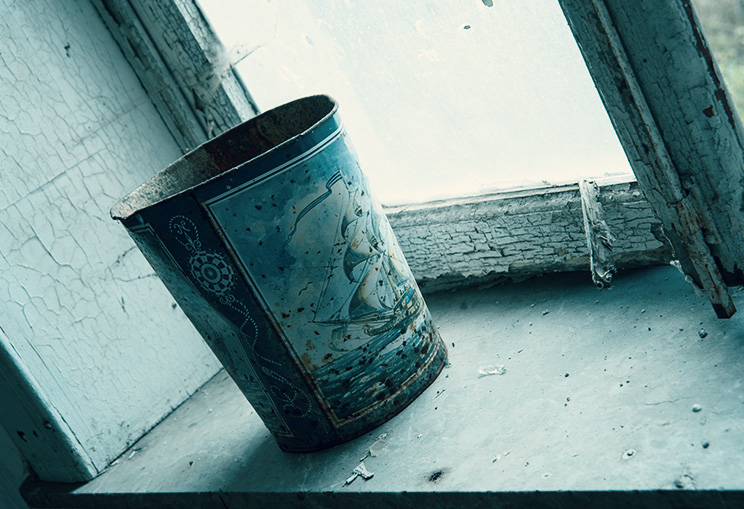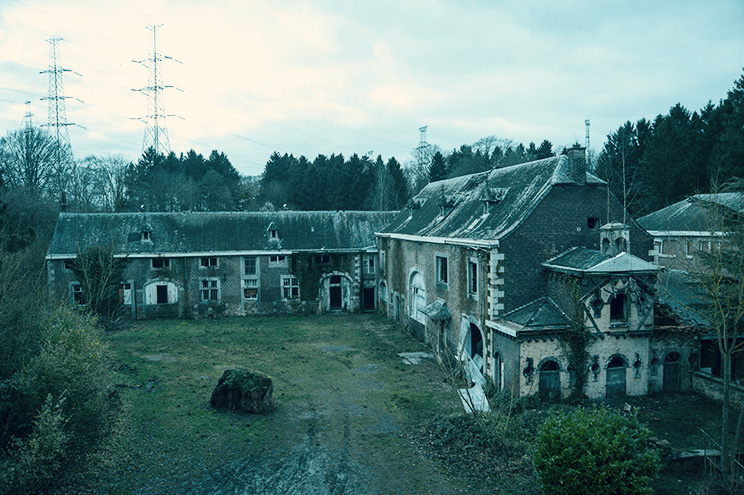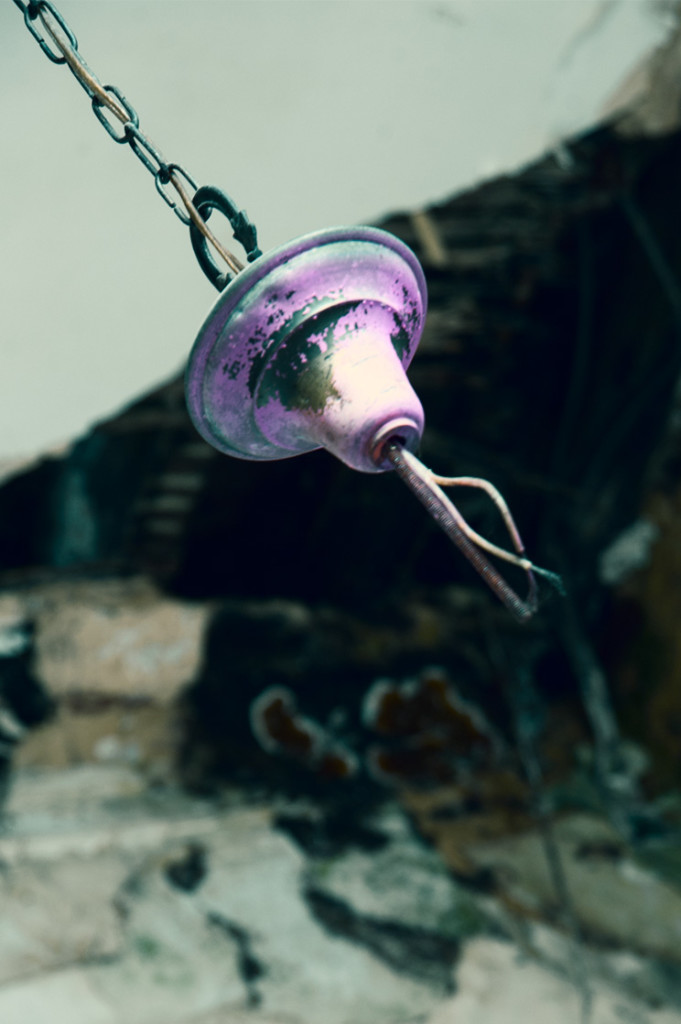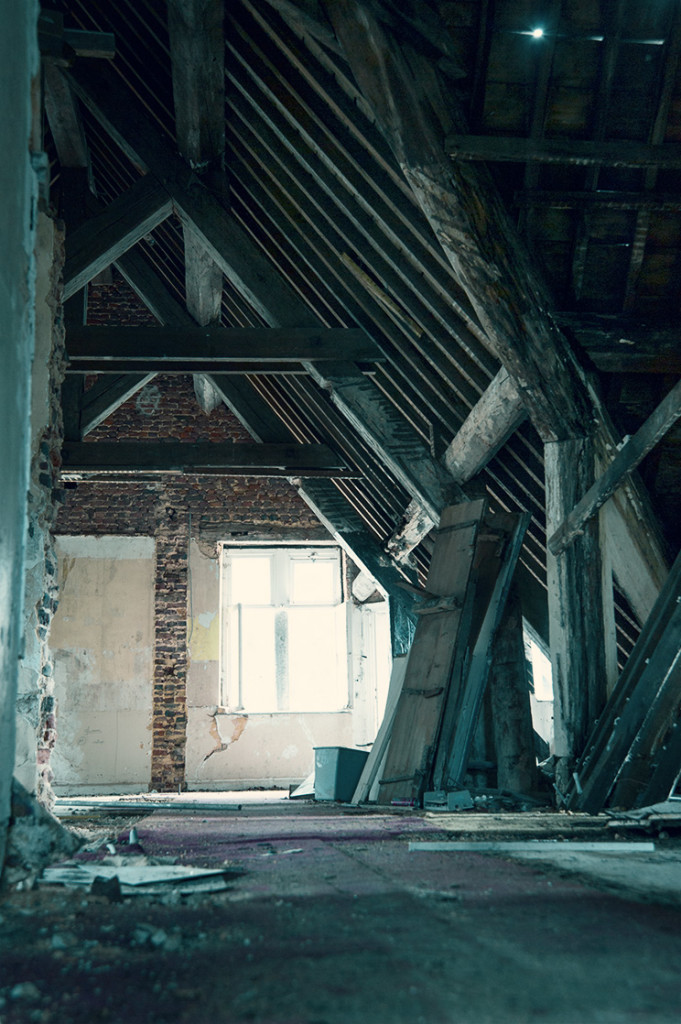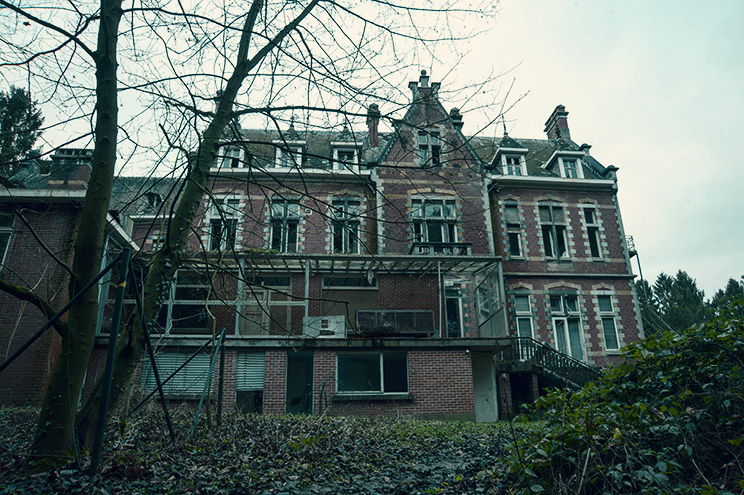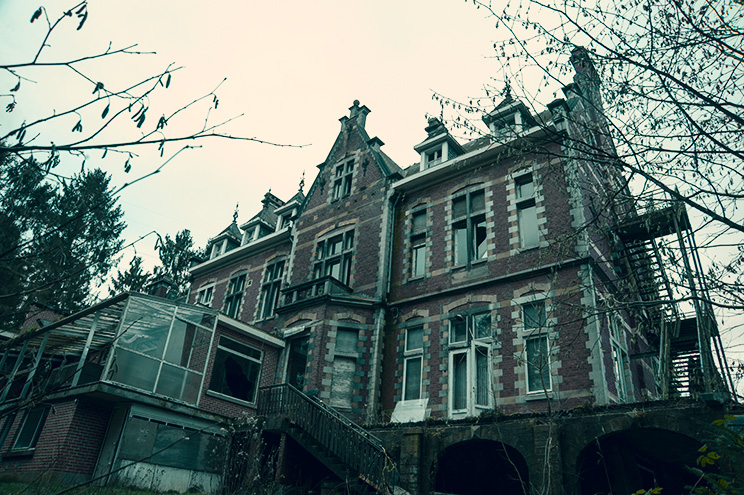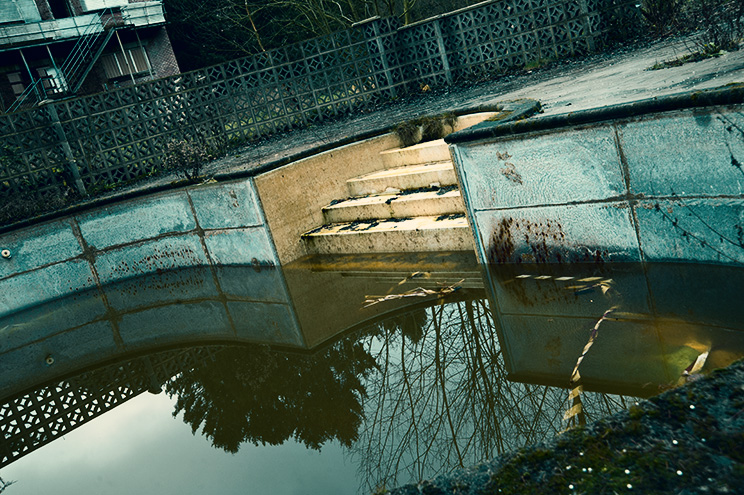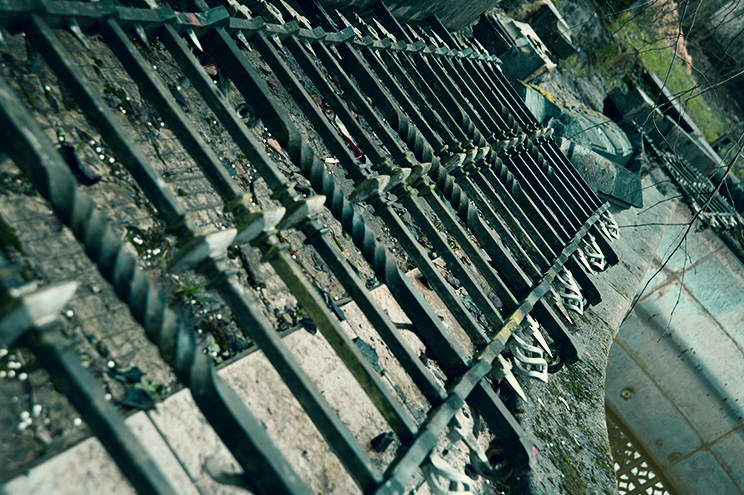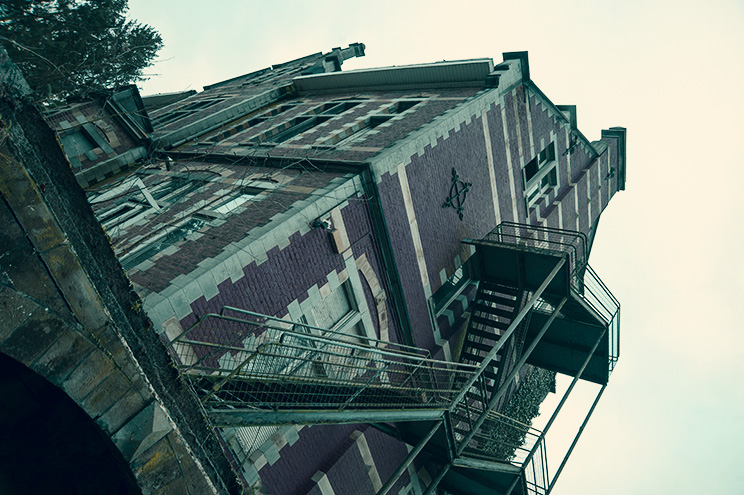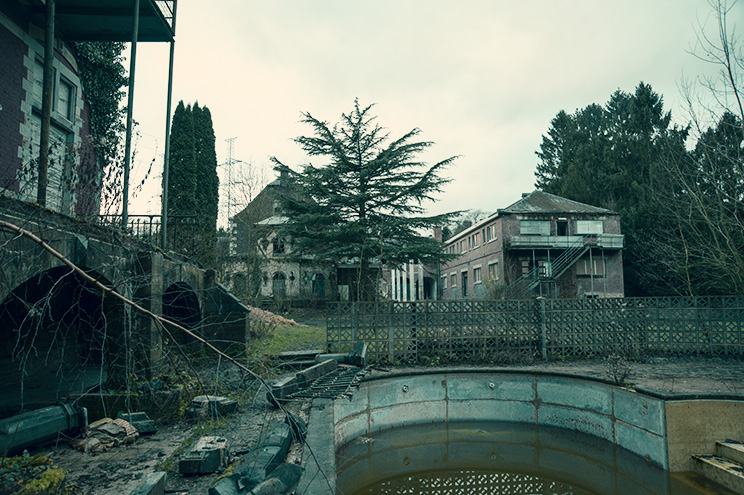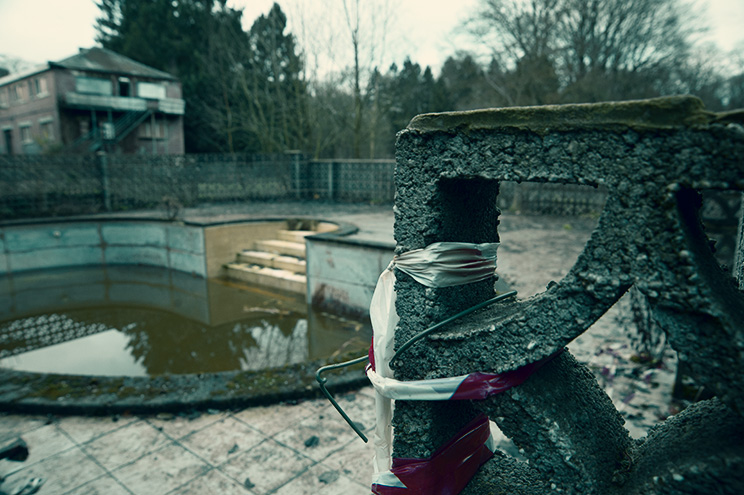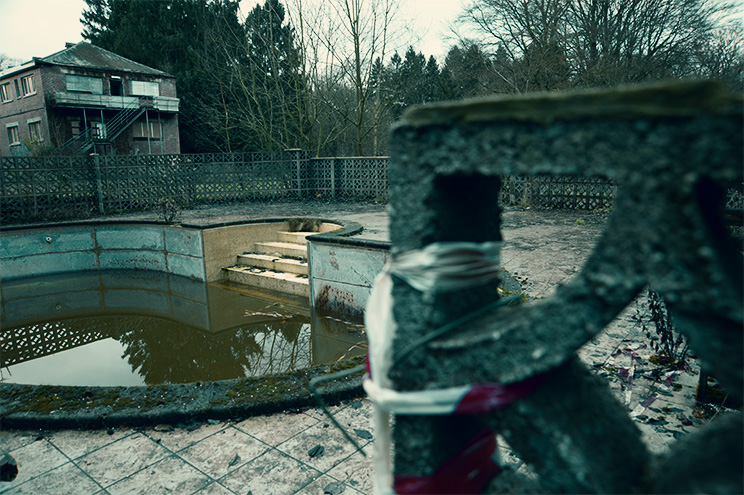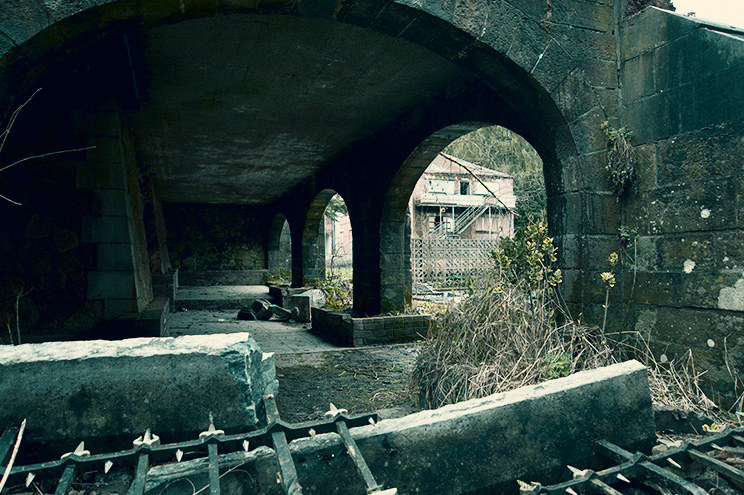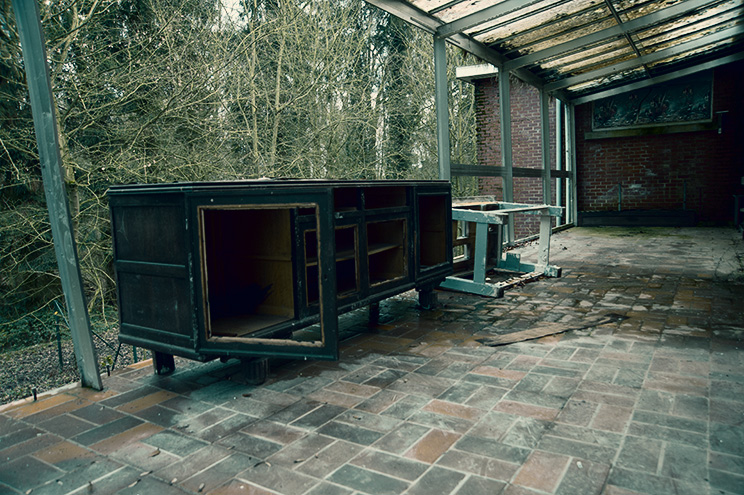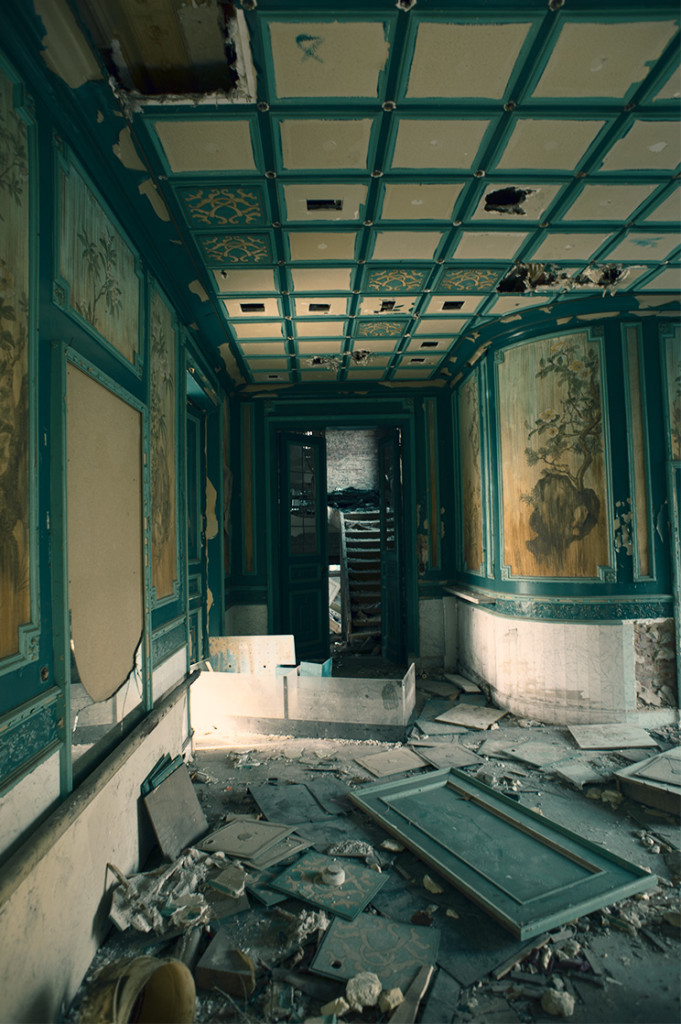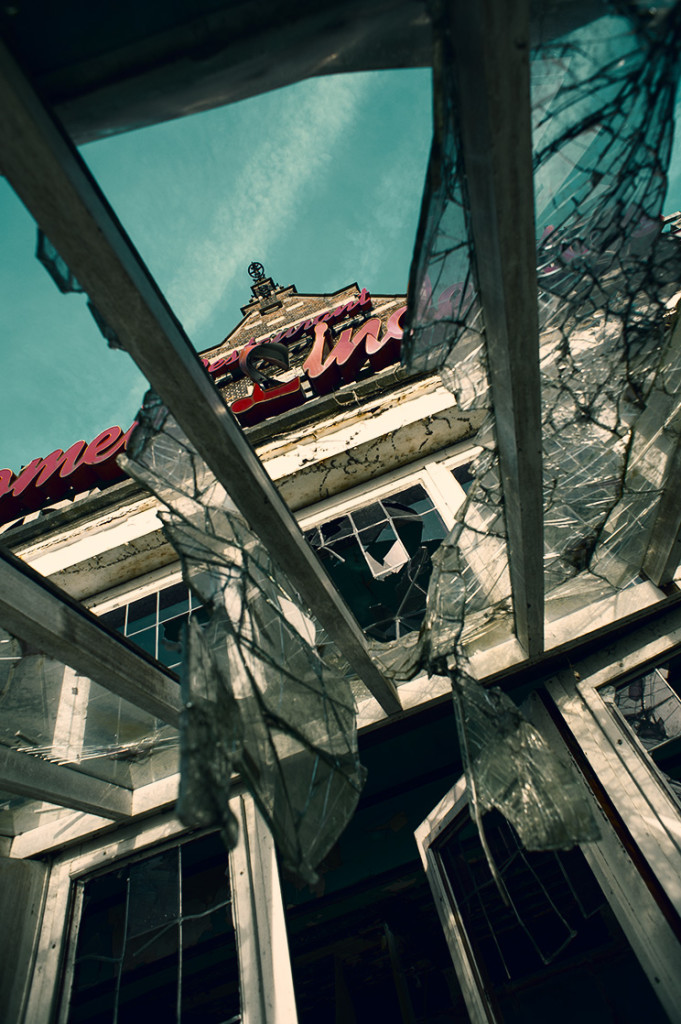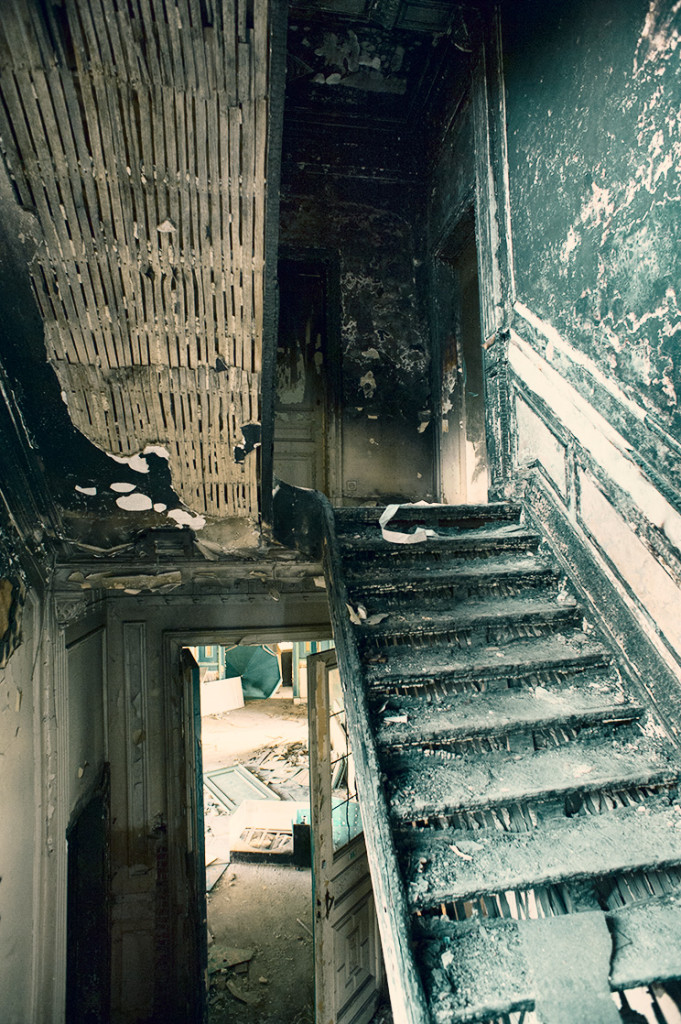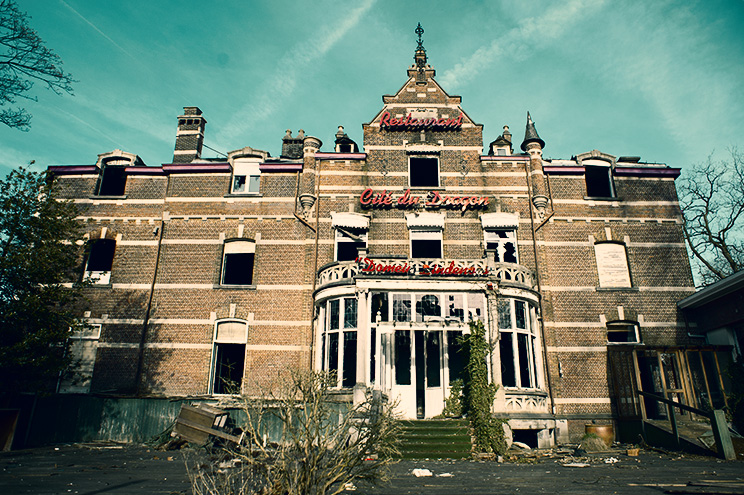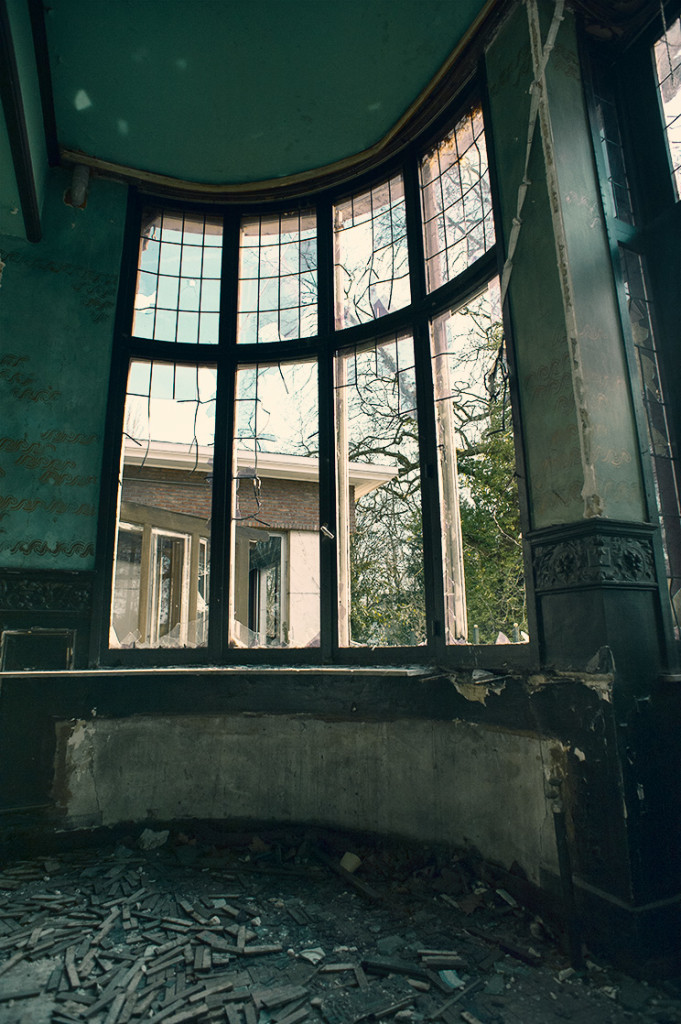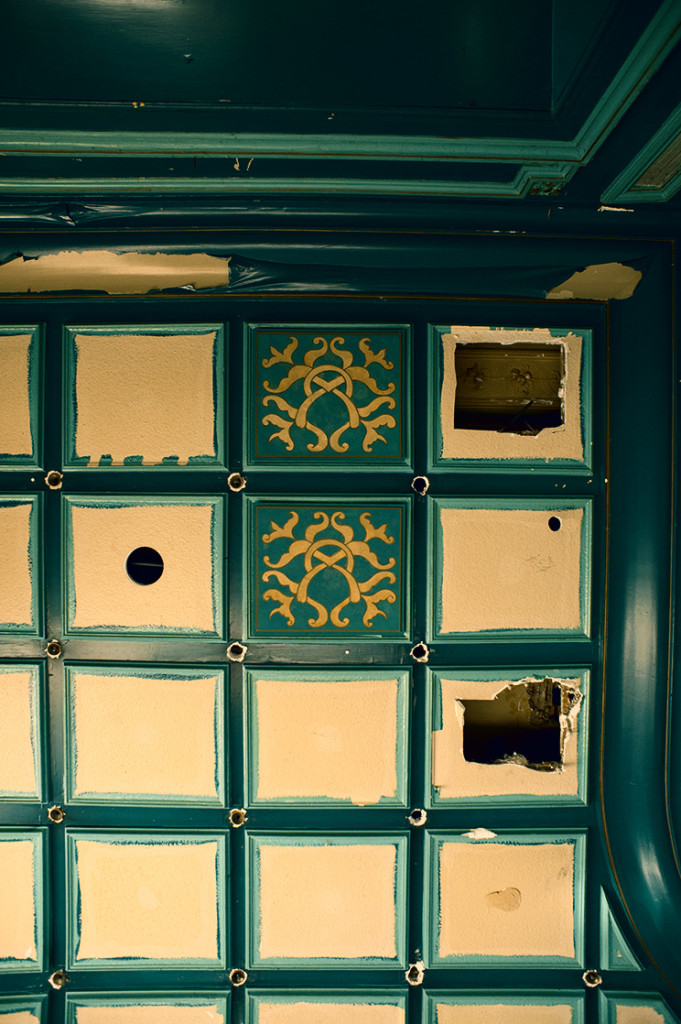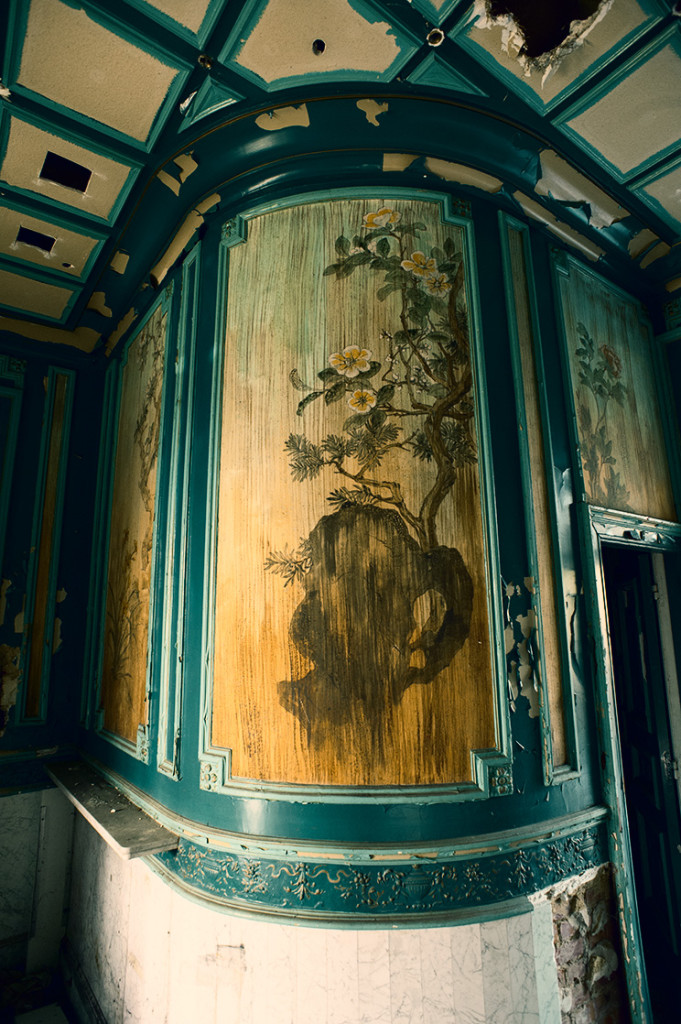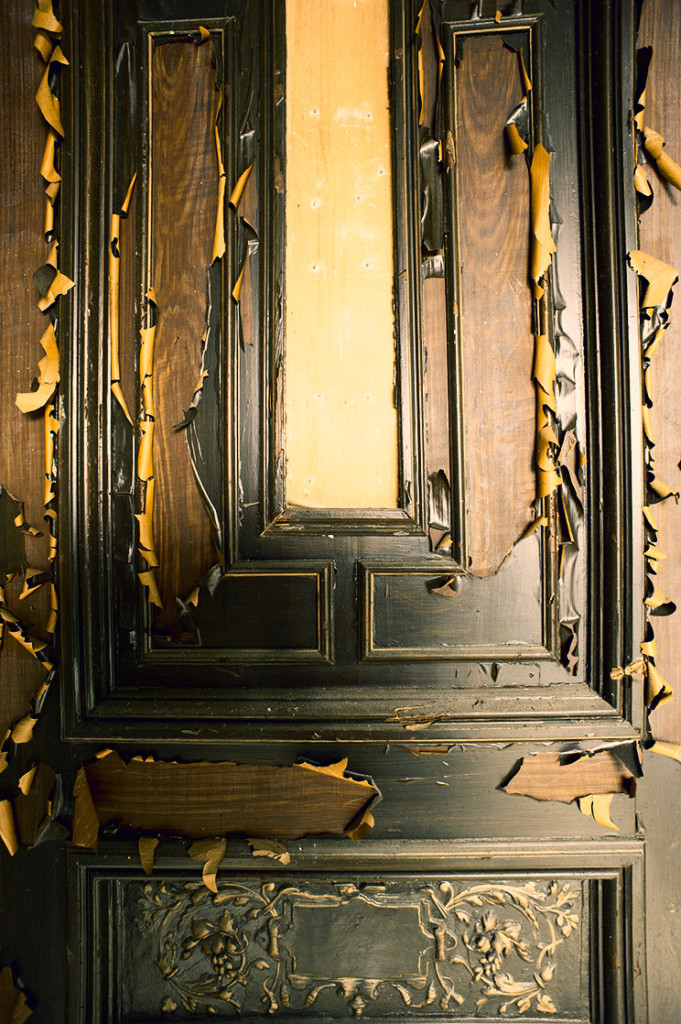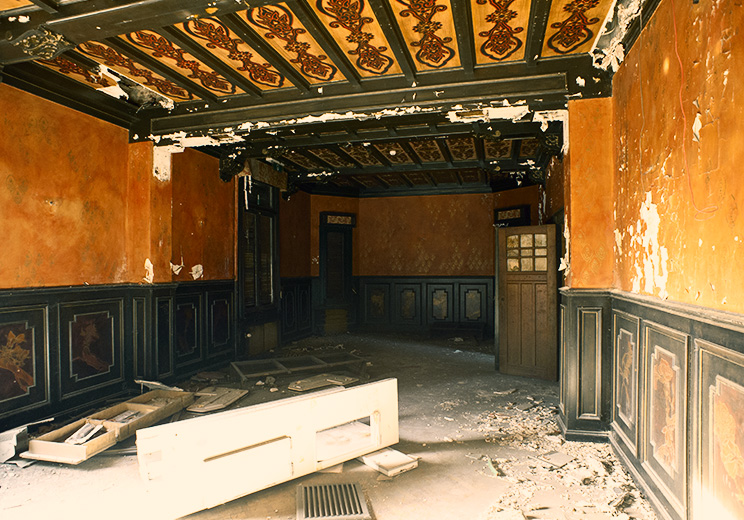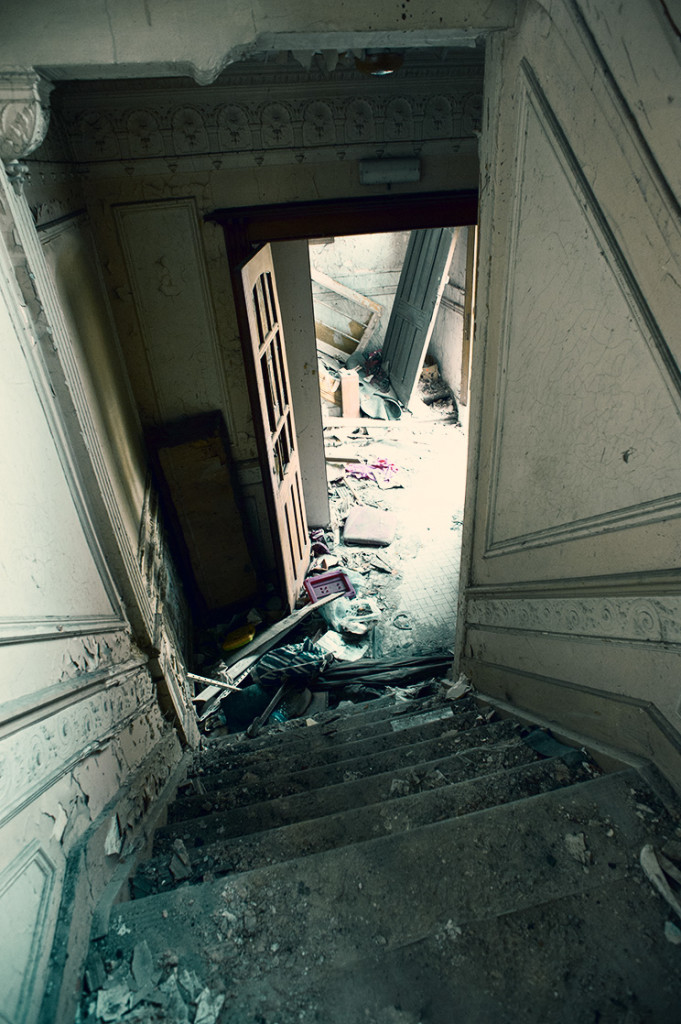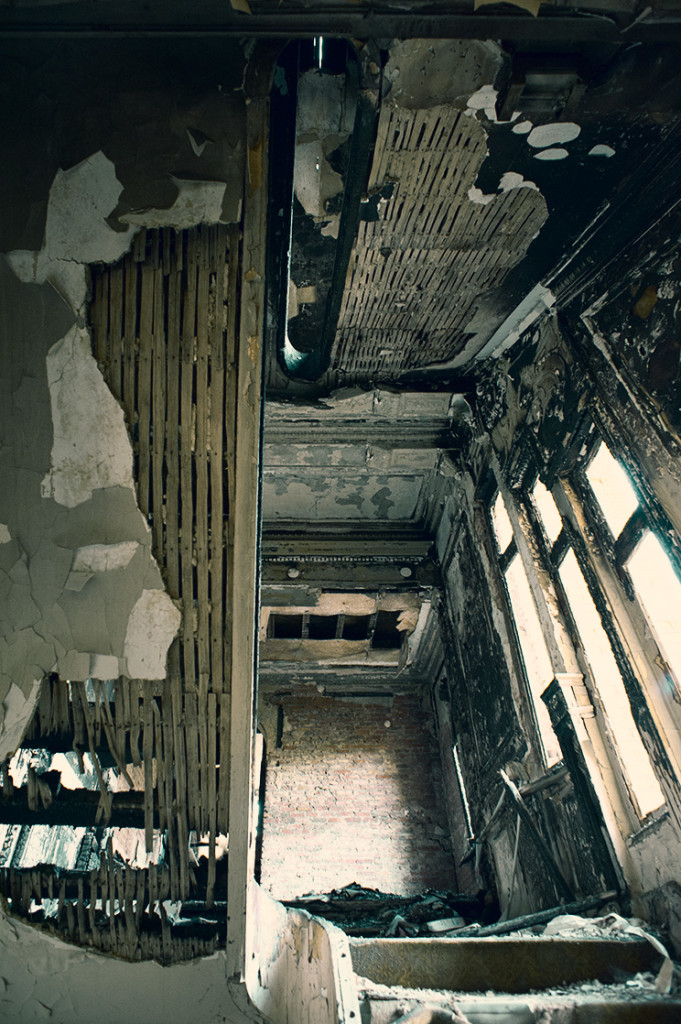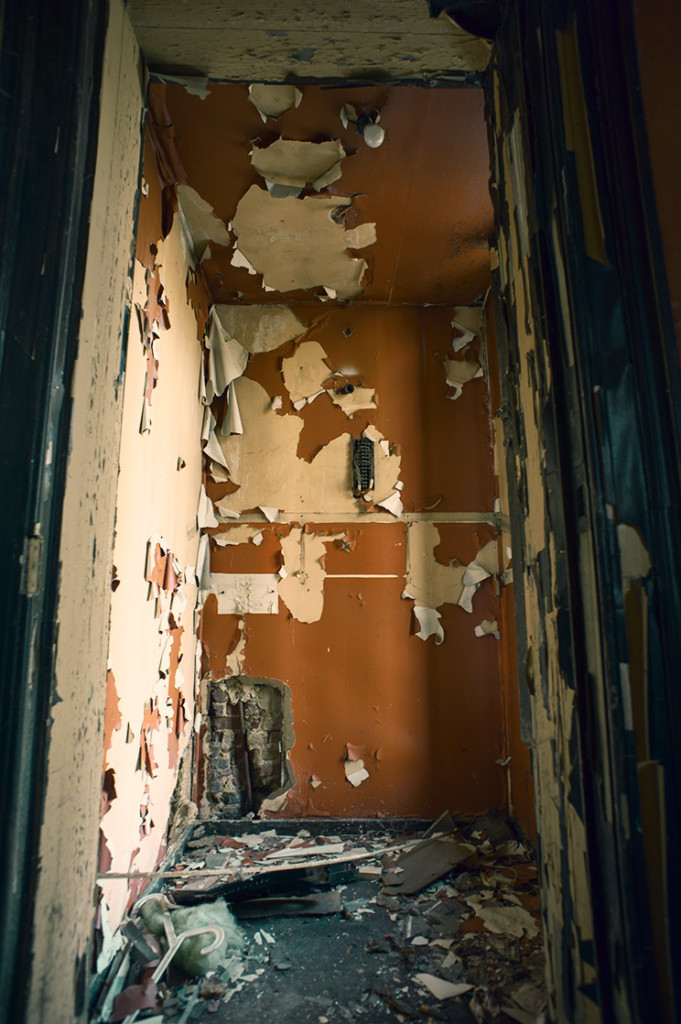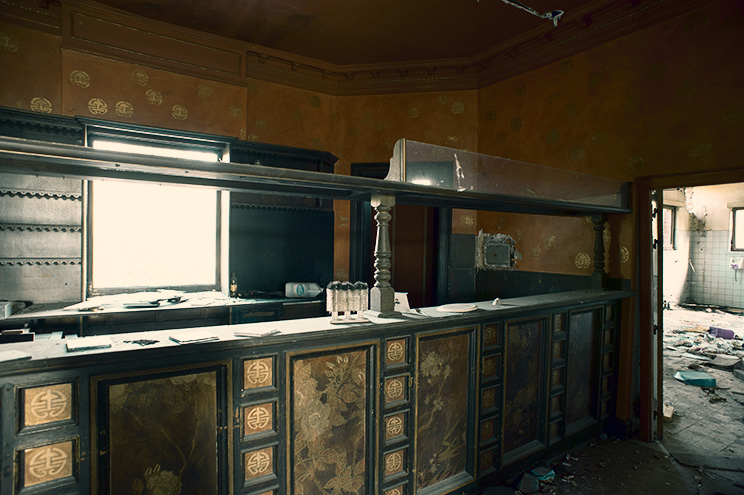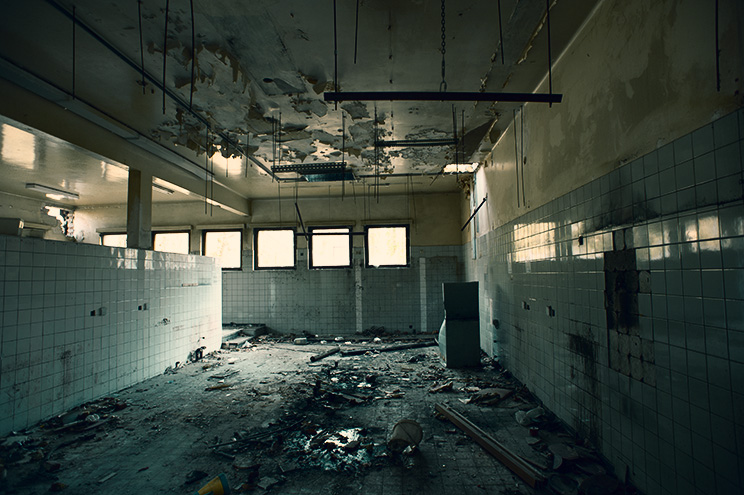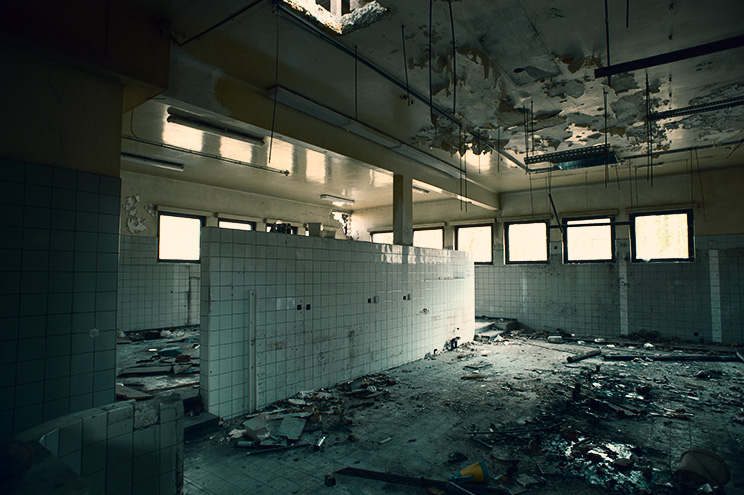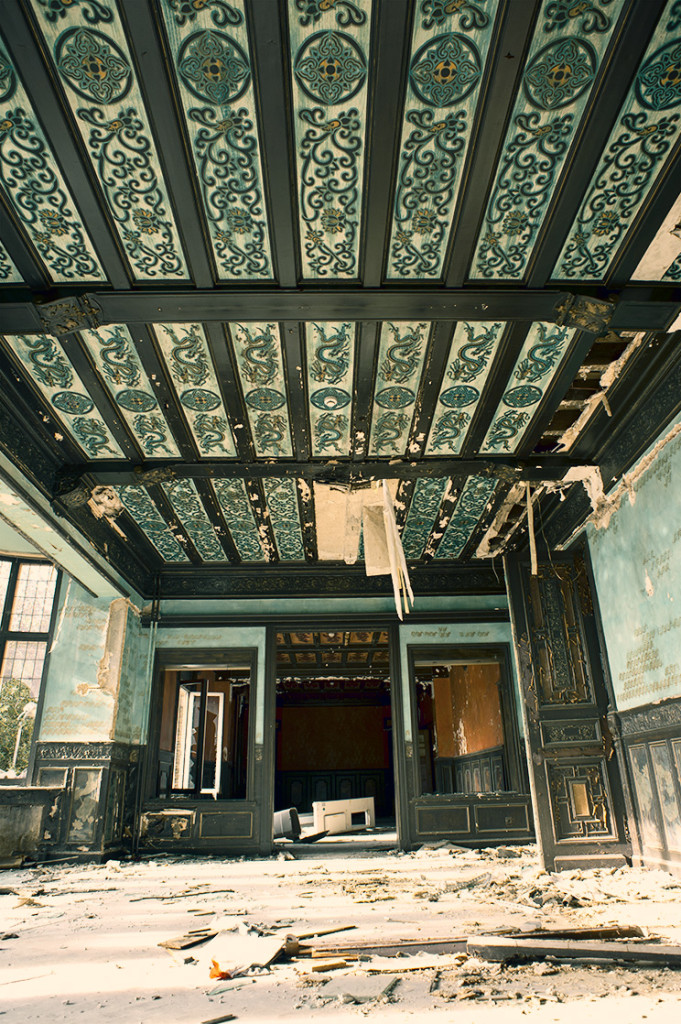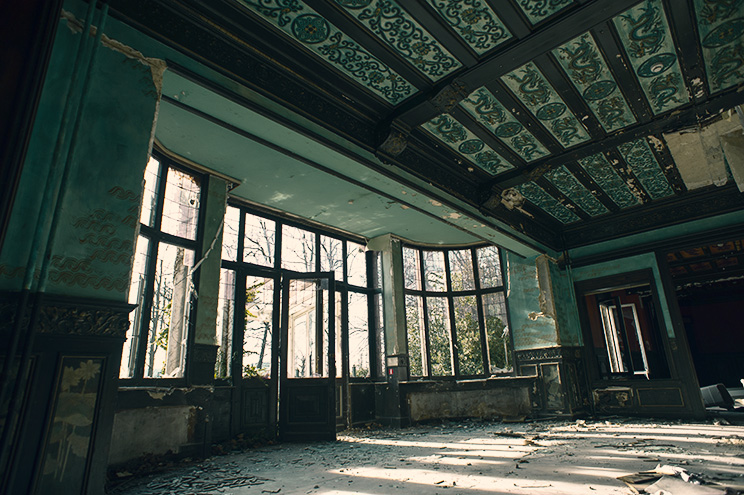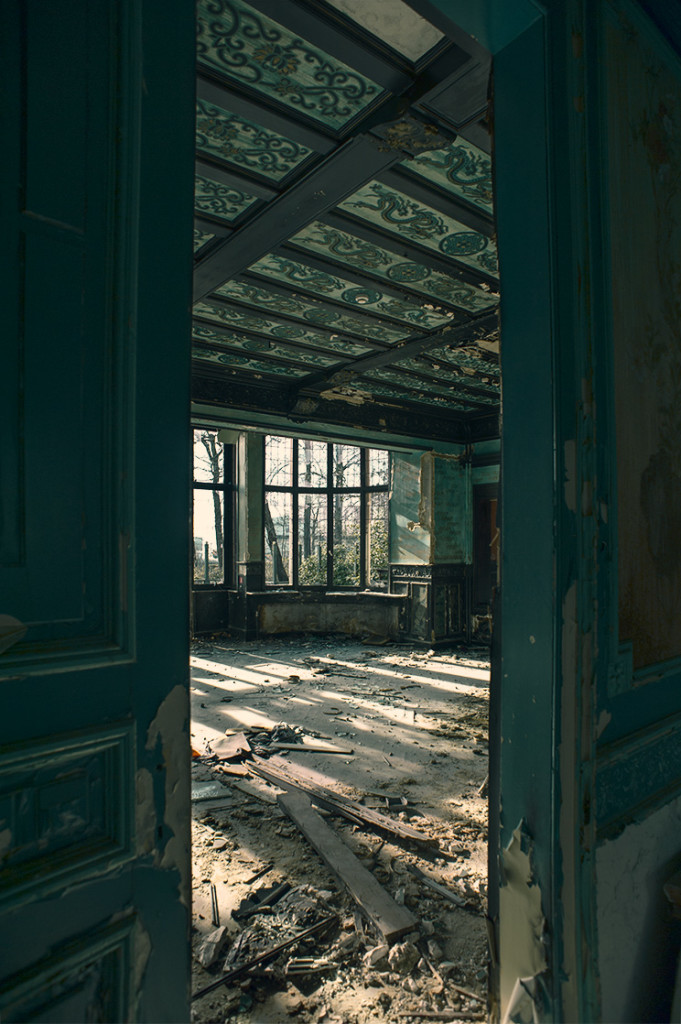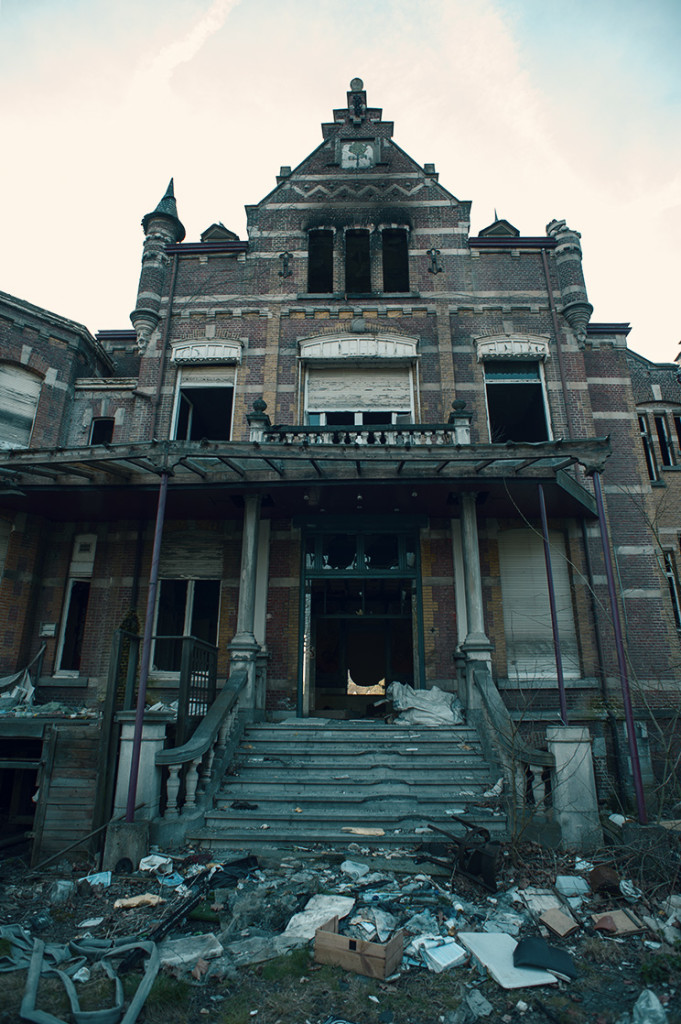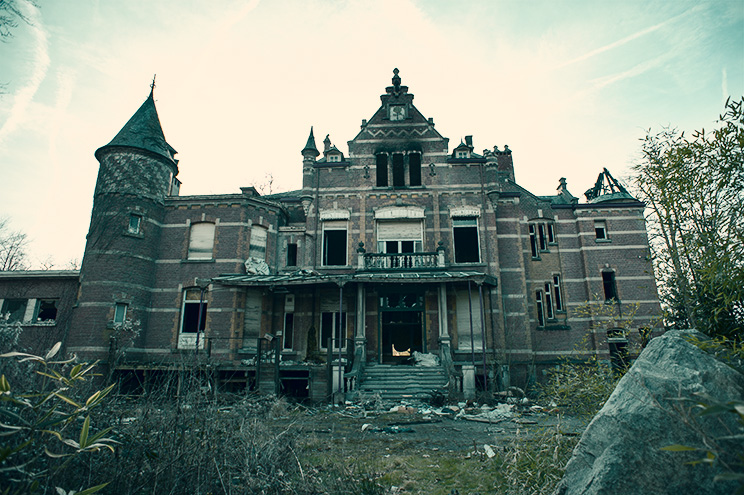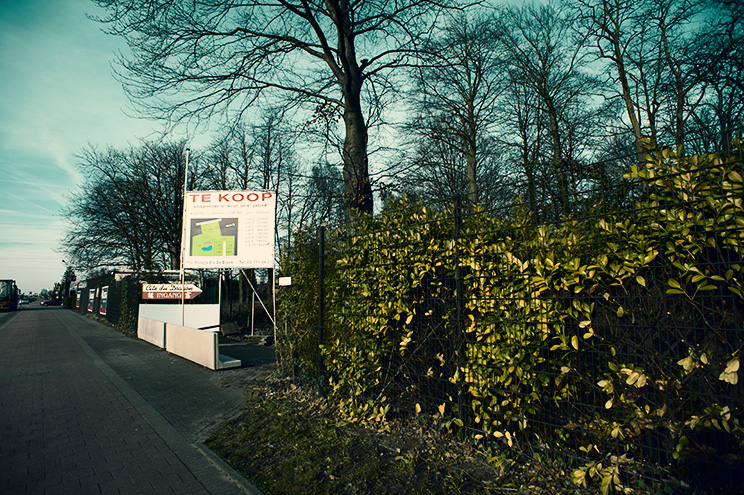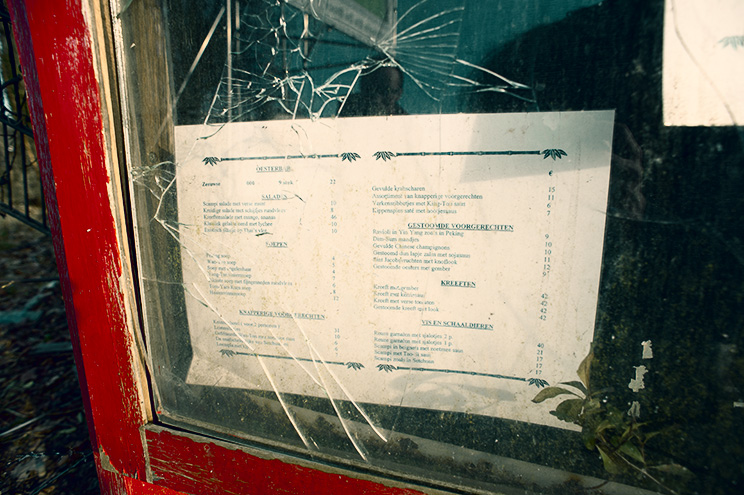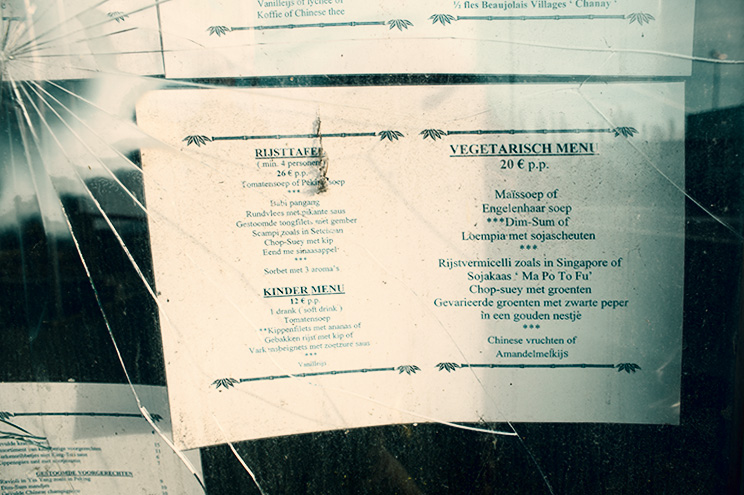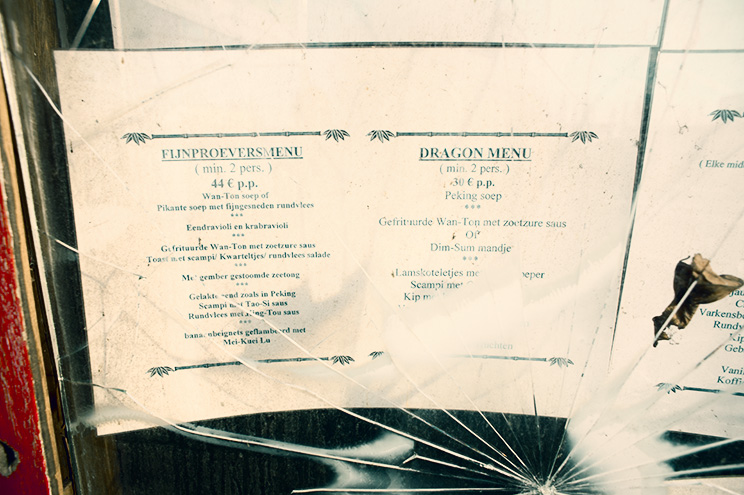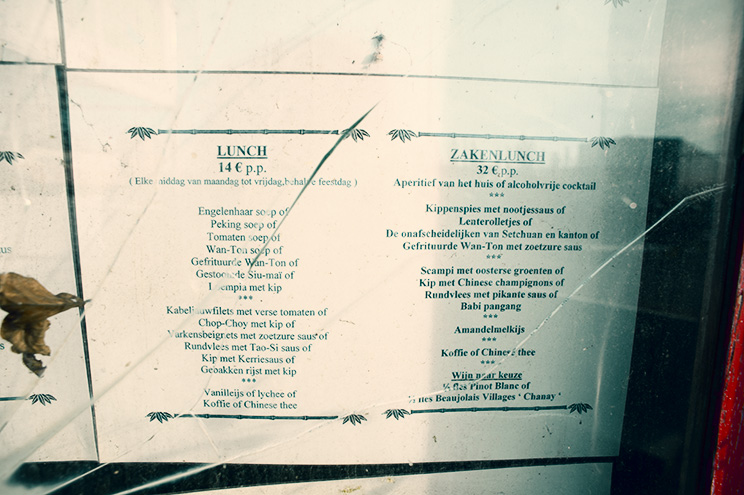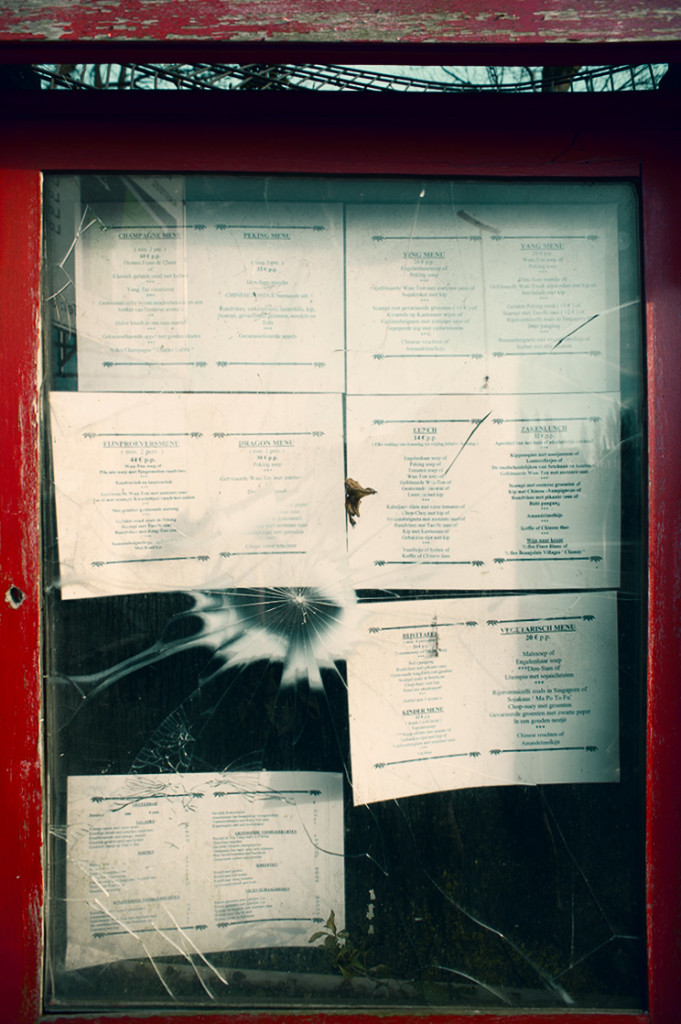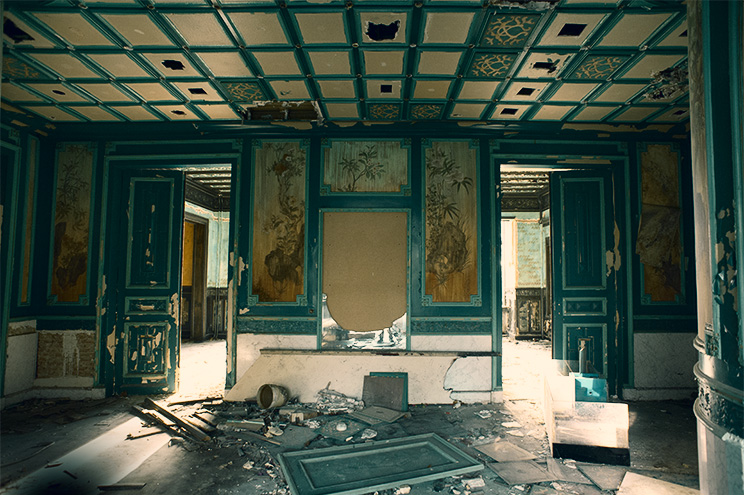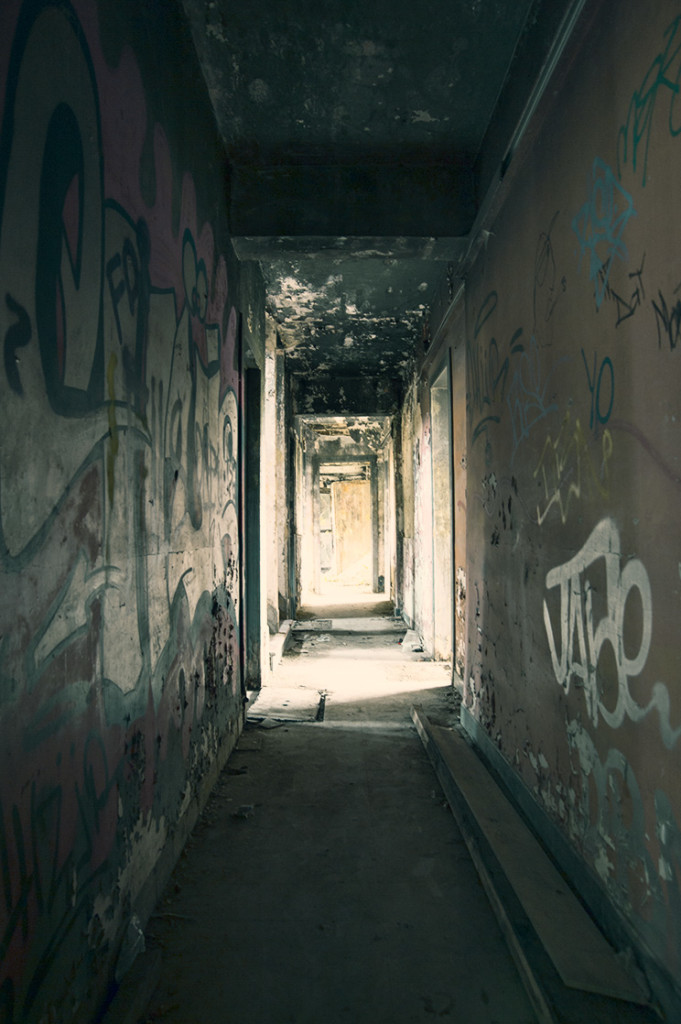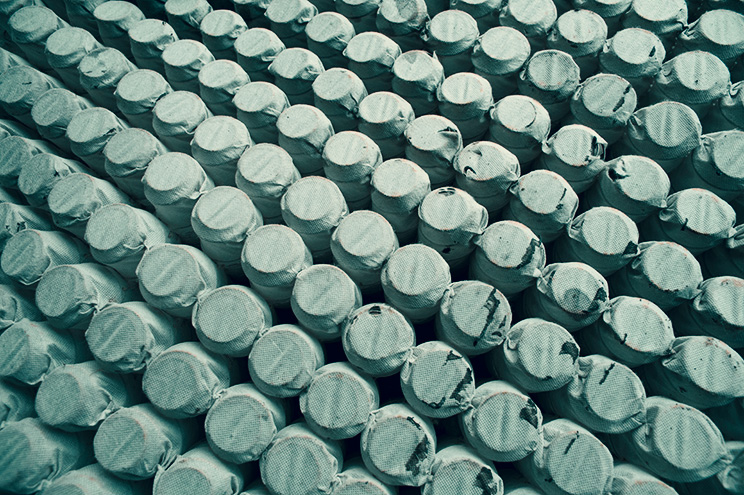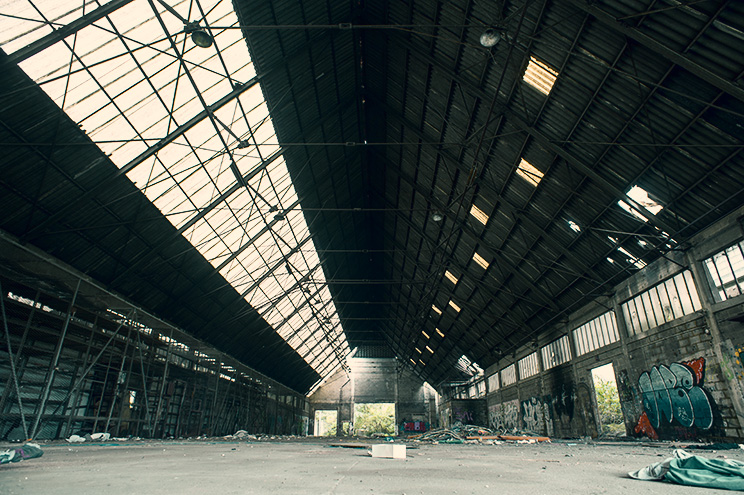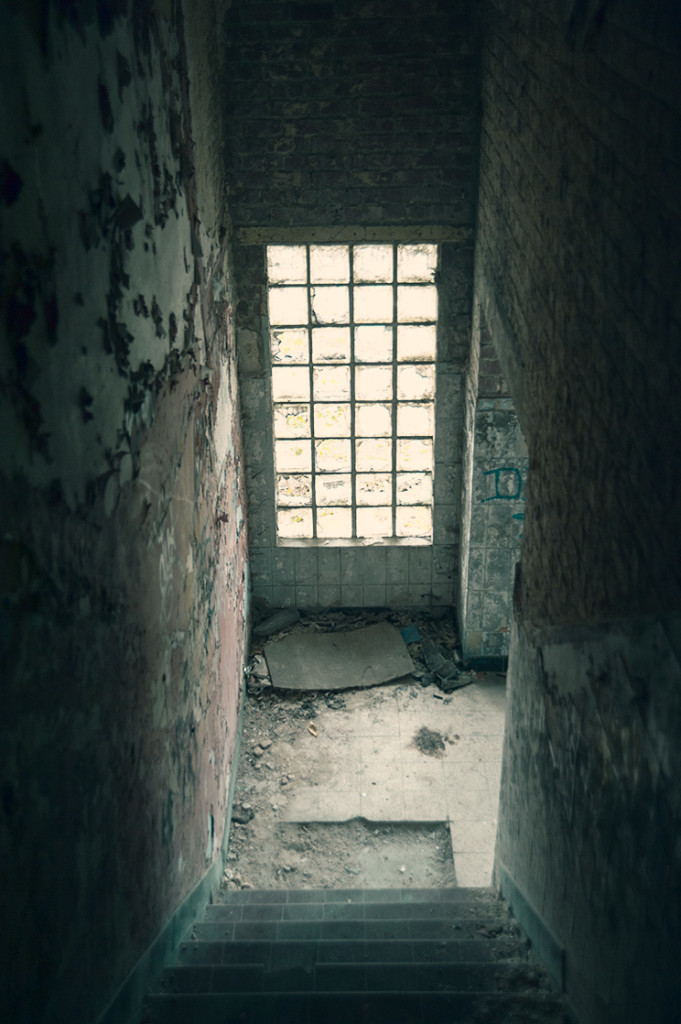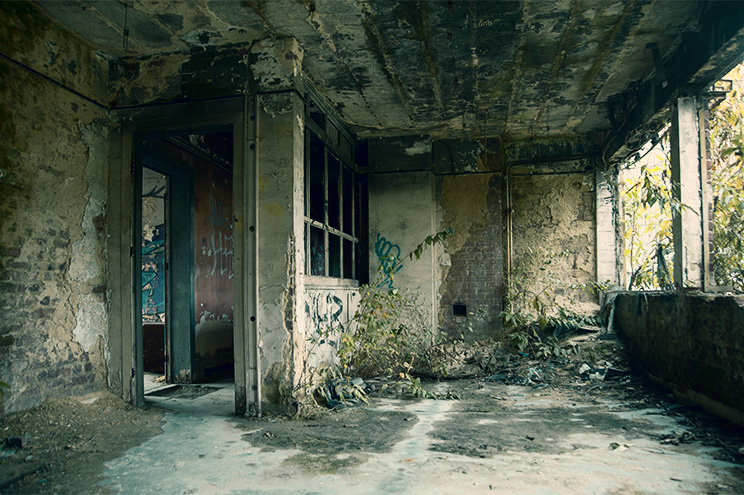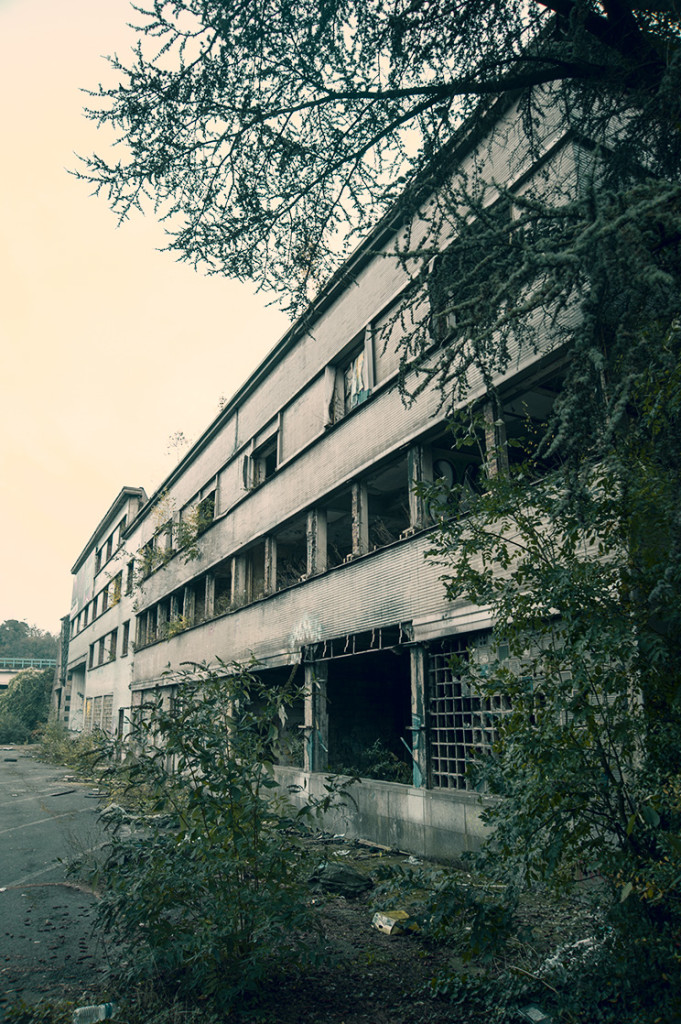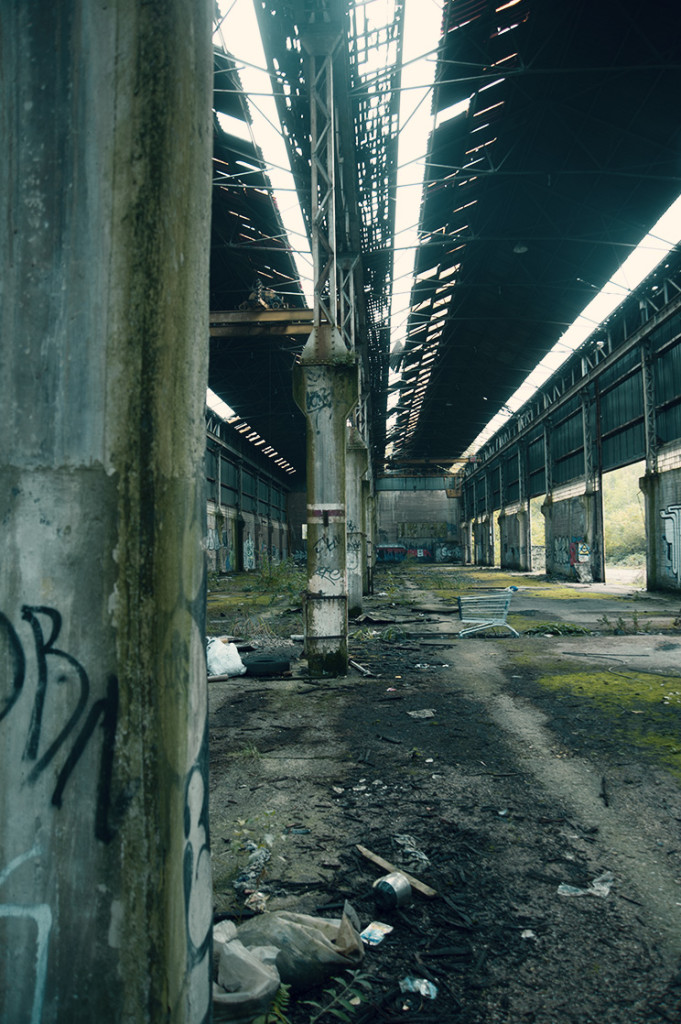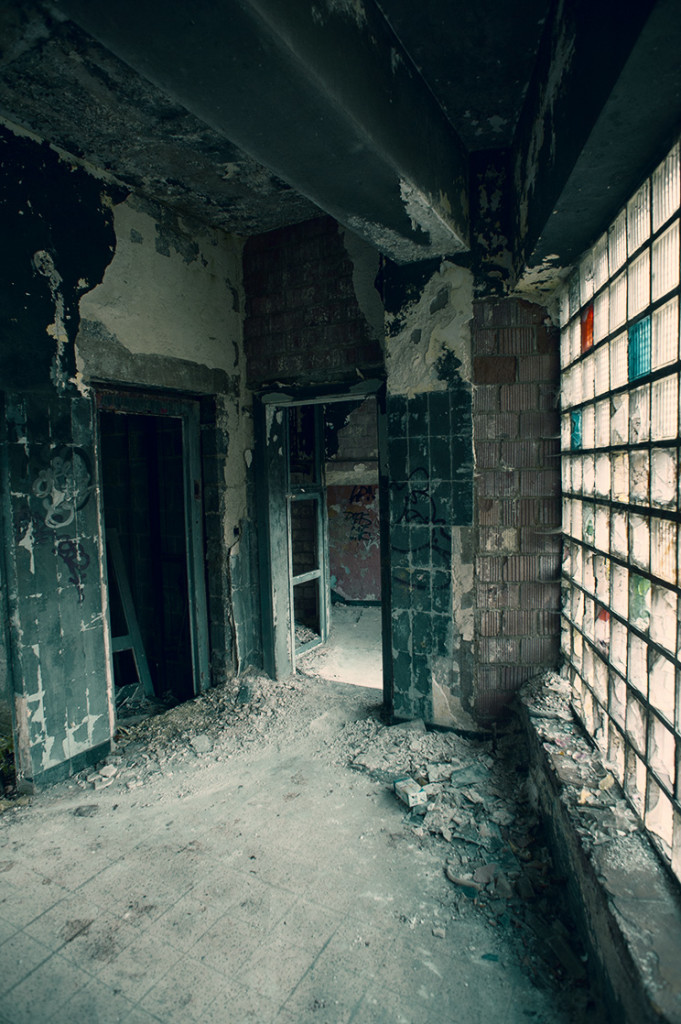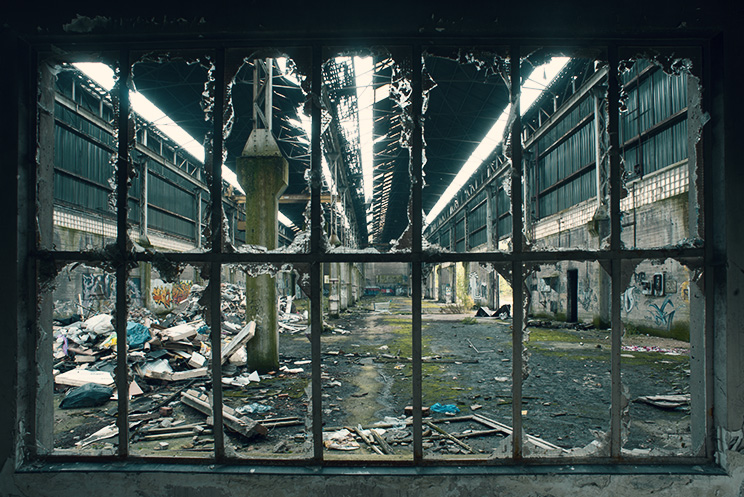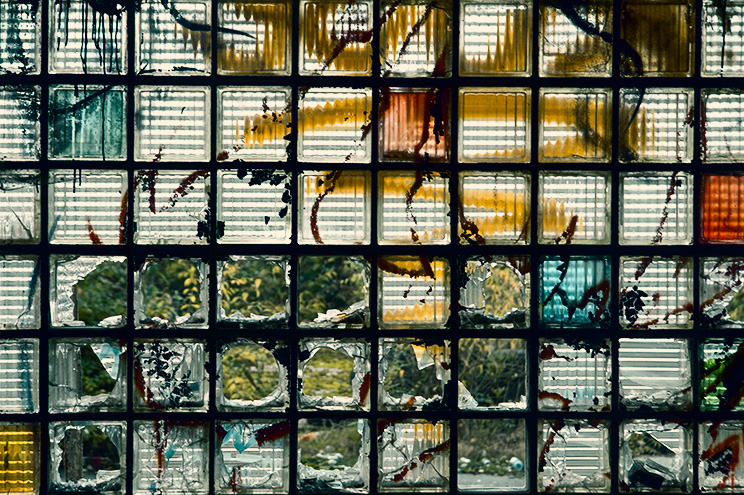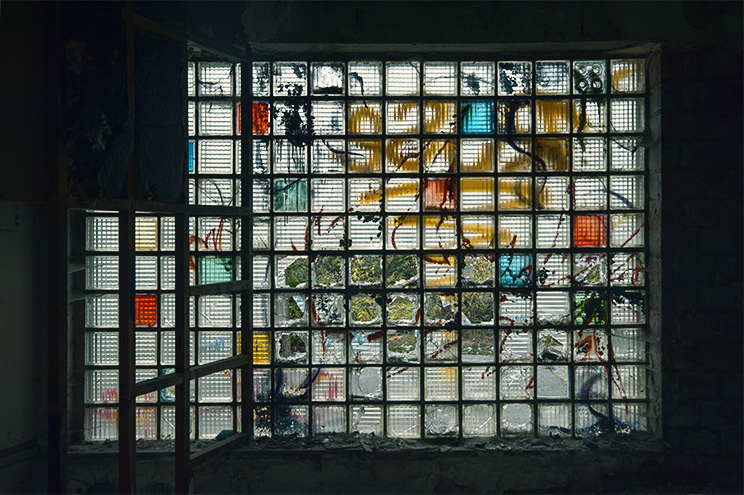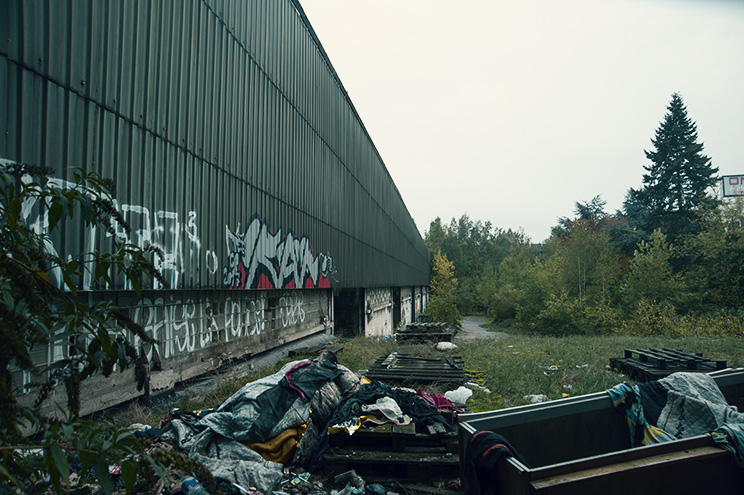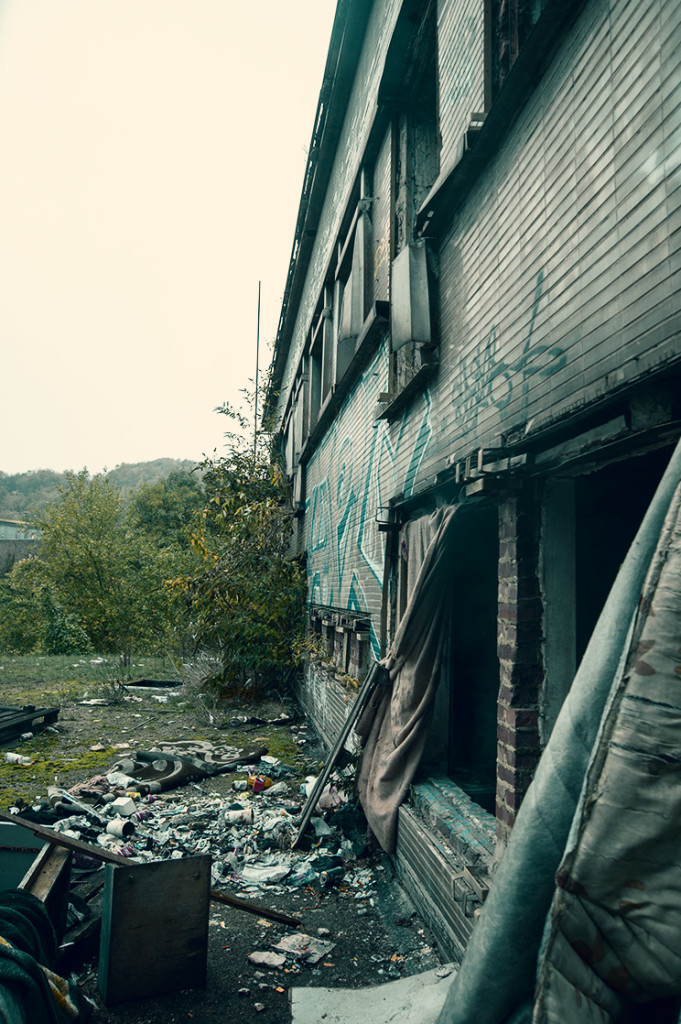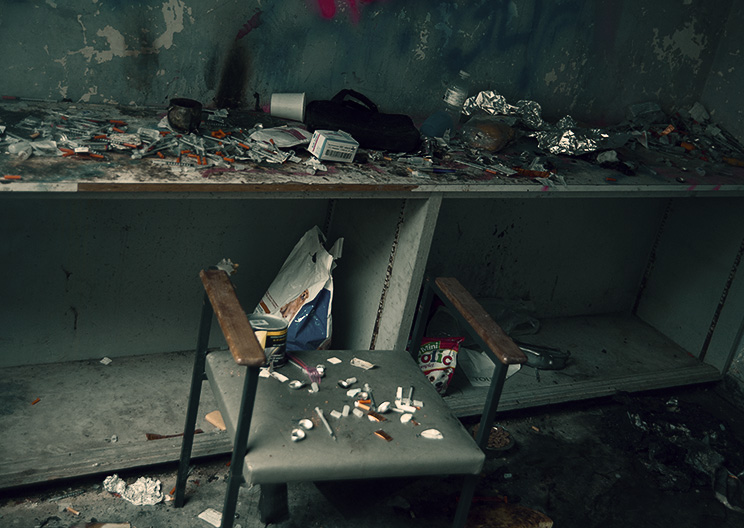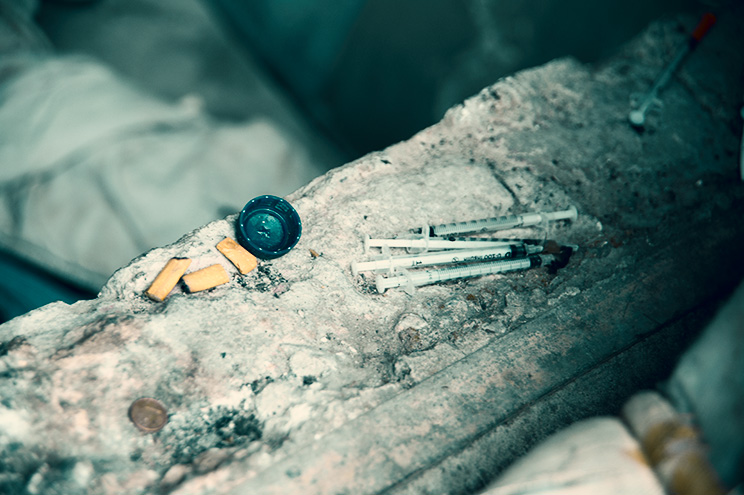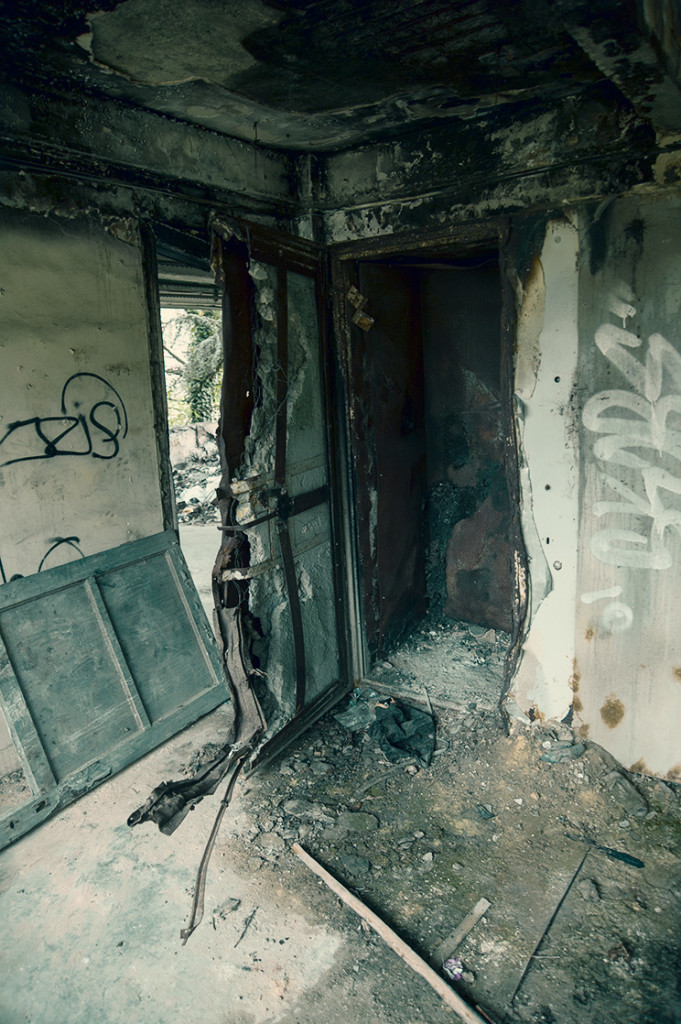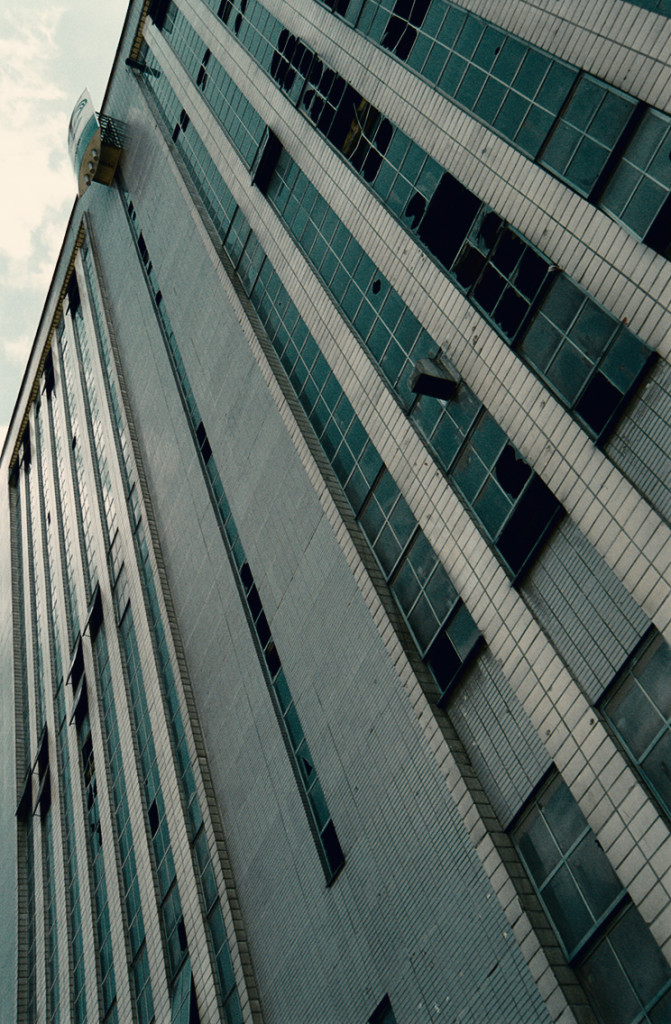
Das Kraftwerk IM in Belgien wurde 1921 erbaut und war als es in Betrieb ging eines der grössten Kohlekraftwerke Belgiens.
In den 70er Jahren wurde es dann auf Gas umgerüstet und war zuständig für einen der wichtigsten Standorte für Stahlerzeugung in Belgien.
Irgendwann fand eine Untersuchungskommission dann heraus das das Kraftwerk für 10% der Kohlendioxid Emission in Belgien verantwortlich war und nachdem dann Greenpeace 2006 heftig gegen das Kraftwerk protestiert hatte wurde es schließlich 2007 geschlossen.
Die Begehung des riesigen Gebäudes war ein ziemlicher Akt. Zum Einen ist es auf das Heftigste bewacht, sowohl mit Patrouillen als auch mit mobilen Kameras und zum Anderen sind alle natürlichen Eingänge mit riesigen Betonklötzen versperrt die ein normales Einsteigen unmöglich machen.
Nach einiger Suche im Schutz vor den Kameras und mit je einem offenen Auge für die Patrouille entdeckten wir in etwa 10 Meter Höhe ein kleines offenes Fenster aus dem ein Tau hing. Mit etwas Geschick konnte man die Fassade hoch klettern und sich dann an dem Seil hochziehen und durch das Fenster klettern. Damit war man im Nebengebäude angelangt, in dem wir auch die ersten Fotos machten. Leider gab es von dort aus aber keinen Zugang zum Hauptgebäude und so mussten wir wieder die Fassade herunter klettern und nach weiteren Eingängen suchen.
Die nächste Möglichkeit entdeckten wir oberhalb einiger Betonklötze vor einem Haupteingang. Wenn man dort bis in etwa 6 Meter Höhe hinauf kletterte und sich dann noch einmal zwei Meter bis auf einen schmalen Vorsprung hoch wuchtete konnte man durch ein kleines Schlupfloch in einem der riesigen Fenster in’s Innere schauen. Allerdings musste man um dann wirklich hinein zu gelang noch einmal etwa 10 Meter an den Stahlpfeilern auf der anderen Seite (die Gott sei Dank nahe am Fenster standen und erreichbar waren) hinunter klettern, was wir dann auch taten
Leider war das Gebäude nicht mehr so gut in Schuss wie wir es von früheren Bildern her kannten, aber eine Besichtigung war es allemal wert, bestand doch der Reiz vor allem darin an den Wachen und Kameras vorbei zu kommen.
Im Gebäude angelangt stellten wir dann allerdings auch fest, dass wir nicht alleine waren. Aus einigen Löchern im Boden die zu den Kellerräumen führten stieg beissender Gestank auf, der uns nur allzu bekannt war. Kabelratten! Sie hatten alles was nur ein Gramm Kupfer enthielt in den Keller geschleppt und fackelten dort die Plastikummantelungen der Kabel ab. Ihr Versteck hatten wir schon einige Zeit vorher entdeckt, als wir zum Turm des Förderbandes hoch geklettert waren in dem die Kupferdiebe ihr Hauptquartier eingerichtet hatten. Trotz Wachdienst und mobiler Kameras…
Das Schönste an diesem Bericht ist, das alle Bilder analog geschossen wurden. Meiner Meinung nach immer noch die schönste Art der Fotografie und der perfekte Look für Urban Exploring Bilder!
Power Plant IM was originally built in 1921 and when it started it’s service it was one of the largest coal burning power plants in Belgium.
In the 70’s the power plant was converted to use gas as energy source and became the main producer of electricity for one of the most important regions for steel production, but somewhen after 2000 an examination commission found out that the power plant IM was responsible for 10% of the CO2 Emission in Belgium and from then on it’s days where numbered. Greenpeace started a big campaign and in 2007 the station was shut down.
The perpetuation of this giant building was a huge effort. It is heavily monitored by guards and mobile cameras and all entrances have been blocked by giant blocks of concrete which make a normal get in impossible.
After some search (always hiding for the cameras and with one eye open for guards) we saw a rope hanging out of a small window in about 10 meters over ground. We managed to climb up the facade, grabbed it and in we where! We started to take pictures and to explore one room after the other but soon we realized that this was only the adjacent building and there was no way into the main building from there. So we had to climb down the facade again and went on the hunt for other hidden entrances. The only way in we found was a small hole in one of the big windows about two meters above some of the giant concrete blocks in front of one of the entrances. So we climbed up the blocks about 6 meters, hauled our bodies up to the window and could see into the building. Fortunately on the other side where some metal pillars directly in front of the window which we could climb down into the power plant.
Unfortunately the building was in a bad shape and a lot of the interesting stuff we had seen on older pictures was already gone but visiting this building was nevertheless worth it, let alone for the fun to get inside despite the guards and cameras.
Inside the building we realized that we where not alone. Biting stink, which we knew all to well, rose up from some holes in the ground leading to the basement. Metal thieves called “Kabelratten” in Germany! They had dragged all the wires into the basement and burned the plastic to get the copper.
We had seen their hiding place before when we climbed up the tower of the conveyor belt where the metal thieves had their main quarter, despite the guards and all the cameras…
The best thing was that I shot everything on film, which is in my eyes still the most satisfactory way of making photos. Especially with urban exploring because the film look goes so well with the lost places.







































